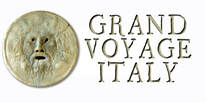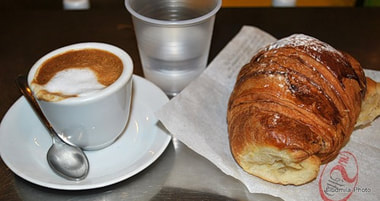 A typical Italian breakfast A typical Italian breakfast Just how did this riposo thing get started in Italy (and other Mediterranean countries)? Many attribute it to the heat in the middle of the day--which can get extreme in summer--combined with the typically heavy meals eaten as lunch in the Mediterranean diet. Simply put, people get drowsy after a big meal. Italians supposedly are embracing this biological fact as part of their natural clock... napping when their body says to nap, whereas Americans are out of tune with their natural rhythms. When you speak to Italians and understand their lifestyle you get a clearer picture of what is going on. First of all, most have a colazione (breakfast) either at home or at a bar on the way to work. Espresso and sweet cakes. Sugar and caffeine. They have coffee breaks too. The typical worker will go out to a "bar" for for both breakfast and their coffee break. It's a social thing that Italians can't live without, and shouldn't. It's part of their culture. Italians tend to eat these light breakfasts (and some going without) but recoup with a larger lunch than other cultures. One of the most surprising--and often frustrating--things voyagers to Italy discover is the long midday rest period (similar to the siesta in Spain). It northern Italy this period is called riposo or la pausa, and in the south is called pennichella or pisolino. Riposo means to rest, pausa to pause or take a break. What will surprise (and possibly inconvenience) Americans is that most shops and workers close and go home to for il pranzo (lunch), typically, the largest meal of the day. This closure can include restaurants, clothing stores, gift shops, grocery stores (alimentari), banks, pharmacies and even some post offices. Often a business closes at noon or 1pm and doesn't open again until 3-3:30pm or later. Small towns can look like ghost towns during riposa. Unlike in the U.S., Italians don't rotate their staff during riposa. The shop simply closes. American business logic would leave at least one employee in the shop while another takes his lunch, rotating their shifts. In Italy this isn't even considered. Voyagers need to be ready for this. Even places you'd think wouldn't--or shouldn't--close up tight for a few hours, like car rental offices. In Italy, car rental offices in Italy are merely brokers, who pay a fee to use the logos of larger companies. They are mostly local and very independent. They are often staffed by at most 2-3 people, with all closing up for riposa. In small towns you'll even see the local Polizia station closed for riposa. I experienced lunchtime closures while living in France years ago, but the French only take from 1-1/2 to 2 hours for lunch. In small towns throughout Italy, riposa might even last until 4 or 5pm. Restaurants might not open again until 6-8pm. In Italy, the average workweek comes in at only 36 hours with the maximum set at 40 hours. Overtime isn't permitted to go over 48 hours. Every worker gets 4 weeks paid holiday during August's ferragosto vacation period, as well as 12 national holidays. These are government standards. Indeed, workers are used to a very different pace in Italy. Voyagers need to adjust to this important difference. My issue is when the long riposo closures affect tourist oriented businesses in towns that normally attract tourists. Italians are rightly proud of their beautiful towns and cultural treasures and promote them for tourism, which makes up 13% of the Italian economy. If Italians want the tourist trade, then it seems they might stagger staff and keep things like restaurants, banks and other similar businesses open in these tourist towns. Luckily, more and more supermercarti (supermarkets) are open all day. Local, open-air markets are usually open early in the morning until an hour or so before lunch, but that's only if the town has a market day scheduled. You will see signs listing market times in local piazzi (town squares) for each town that has such markets. Market days are different from town to town. When in a particular town, you can try typing "(townname) mercati comunale alimentare" into Google Maps. This will help find local public food markets along with the days and hours they are open. Some travel bloggers will suggest visiting churches and museums during lunchtime--a bit difficult when traveling with an 11 year old boy who naturally turns into a grumpy, hungry beast at midday. We got into the habit of making sure we always had fixings for an impromptu lunch in our car. We also found that for some reason or other, gelateria throughout Italy are almost always open during lunchtime--Lord knows why. So, gelato and cold drinks became our early lunches on some days, picnics were the norm on most others. The exception to this is when visiting large cities like Rome or Florence. There are so many tourists there that many shopkeepers and restaurants have learned the tourist lunchtime trade is their busiest time of the day--so they remain open during riposa. But beware in the rest of Italy! I can't tell you how many times we came out of a morning's visit to a museum or other tourist site and couldn't find any place to sit and have lunch. The Lunchtime Saviors: Bars Virtually every place displaying the sign "Bar" in Italy is actually a place to get a very good breakfast or lunch. They are used by locals to buy espresso and sweet breads or cakes in the morning, but at lunchtime they offer snacks, panini (sandwiches), focaccia and other things that will satisfy anyone for lunch. How'd this little fact get past us? Perhaps because we were traveling with an 11 year old and like most Americans, have an aversion of dragging our son into a "bar". I assure you, in Italy the local bar is a very family friendly place to have an espresso, cold drink, snack or a bite to eat. Keep in mind that if you want to sit at a table and eat your food, you might get charged a little extra for sitting at a table and not standing at the bar or da portare via (for takeout). Also, bars don't usually have a menu or prepare the food "to order", but instead you select whatever they have in their showcases. It would be prudent for "bars" in Italy to promote the fact that they aren't a dark, seedy place for people chug-a-lugging beer, whiskey and wine, they way a typical American normally thinks of a "bar". It perhaps looks odd to the American eye to see a "bar" crowded with people in the morning, not knowing they are simply having their morning espresso, cornetto and exchanging some gossip with their neighbors. We suggest that the Italian Tourist Board offer signs to bars all across Italy saying "Breakfast & Lunch" in English for areas frequented by tourists. 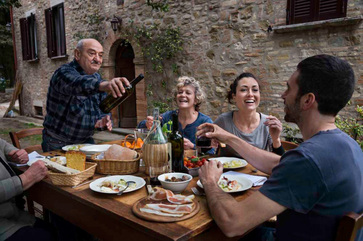 Pranzo con la famiglia Pranzo con la famiglia To stay healthy, most health experts say, "Eat breakfast like a king, lunch like a prince and dinner like a pauper and you'll stay healthy." The Italians do the reverse. They either have no breakfast or have a sweet pastry with a cappuccino (only in the AM!) and have their largest meal during riposo. They could have a bigger breakfast that includes some protein (ham, eggs, etc.) some fat (butter, olive oil) and perhaps have a nice salad for lunch. But Italians aren't really into salads--and when they do have an insalata they don't use salad dressings... only oil and vinegar, and of course, they would never think of adding chicken or ham or cheese to an insalata even if it might add some protein. Because of their big lunch, they might also nap a bit during riposa. Traditionally, lunch (pranzo) is considered the main meal of the day (dinners are lighter). Pranzo starts with antipasti (appetizers), followed by a primo (first dish) which is normally pasta or risotto, and a secondo (second dish) which is normally a meat dish. These dishes are accompanied by one or more contorni, which are either a salad or a vegetable dish such as cooked spinach sautéed in olive oil, peppers and garlic. The whole meal is often washed down by a bottle of wine. Lunch is a relaxed time and is enjoyed by the whole family in small towns across Italy. In fact, middle and high school children are finished with school before the hours of riposa, so they can come home and have lunch with their family or are fed by their nonna. They also have a pausa during mid morning where they have a little panino or cheese and fruit as a snack. Younger children have a healthy lunch provided by the school and stay a bit longer. Young men--unless they work in a big city away from their family--typically live with Mama until they get married. Mama does all the cooking for them, unless like many men in Italy, are fine cooks themselves. Consider them lucky to be fed by Mama or Nonna when they go home for riposa. Obviously, this is a much more humane, relaxed, family-oriented culture. Of course, this brings us to dinner time. Don't even think of looking for a restaurant open and ready to serve dinner before 7 - 8pm. The further south you travel in Italy, the later people eat dinner. I remember before I lived in France, I had dinner at around 5:30pm. When I returned home, I started having dinners on European time... around 7:30. Our family still has dinner about an hour and a half later than most Americans. Italians are also in the habit of having an aperitivo starting at around 5-6pm, and in Northern Italy, the drinks are accompanied by small bites of various foods. They might not eat dinner at all, or have a light dinner at a restaurant or home after 8pm. The hours of restaurants reflect this cultural difference and open later than Americans are used to. In some southern towns, we rarely found restaurants open for dinner earlier than 8pm. For Italians, time isn't as rigid as for Americans. The opening hours listed for shops should be considered merely suggestions. These times are very loosey-goosey. If a shop lists its hours as 8-7 pm, you might not see the shop open until 9:30am. Here are some words that you might see on signs posting operational hours: giorni feriali Weekdays (literally, working days) settimanale Weekly quotidiano Daily ogni ora Hourly By the way, if you see an icon on these signs (and some street parking signs) that looks like a crossed hammer and sickle, it's not a symbol for communism, it simply refers to "workdays", meaning Monday through Saturday. If you see giorni festivi, simply festivi, or a tiny cross, that means Sundays and religious holidays (there are many that Italians close for... remember, it's a Catholic country... all religious holidays are National holidays even though less and less young Italians describe themselves as practicing Catholics). If you see a sign saying chiuso per ferie, it means closed for the holiday. The "holiday" in August means 4 weeks--for most of Italian workers. Shops close up and whole families go to beach resorts or camping. If you see chiuso per lutto, this means they are closed for mourning. Most shops are closed on Sundays whether they go to church or stay at home watching the soccer matches. A Commentary and Suggestions We need to understand this wonderful culture. I understand how Italians think of time as a flowing river and not a commodity to spend nor save. I understand about the midday heat--it's a very hot and humid country. In the past when agriculture was the major part of most Italians lives, it was respectful of nature and biological rhythms to rest in the middle of the day rather than waste a body's resources to the heat of the day. But this is a modern Italy. There is air conditioning--that actually works! (In fact, we recently installed the same type of air conditioning units as in Italy, which are efficient and effective!) Italians have the beauty and history of Italy to grow the their economy--through tourism. Consider that tourists from other countries have certain expectations, even those visiting to explore your wonderful lifestyle. There might be a certain degree of lost jobs profits in your riposa--but I am speaking only of areas where tourism is a mainstay of your local economy. There is a way to embrace your culture while growing your nation and moving forward to the benefit of all Italians. The World Travel & Tourism Council says that tourism brings in over $203 billion a year for Italy, an impact larger than that of the communication services, chemicals manufacturing, automotive manufacturing, higher education, and mining industries. My advice to Italians: Keep your shops and restaurants open during the day in tourism dependent areas. Embrace the idea of employees taking turns with their lunch breaks. Find ways to truly serve the tourists that are bringing so much wealth to your country without expecting them to just put up with lack of comfort or proper services just because that's the status quo. On another touchy subject: Ensure that public rest room facilities and trains have fixtures that are as functional and beautiful as your homes and the apartments we rented. Make certain they are well stocked with toilet paper--and toilet seats. To be honest, some public toilets were simply shameful. And please put an end to the squat-down, so called "Turkish toilet". Please? It's not great for handicapped or the aged among us. As for restaurants, we want to experience your cuisine--not fast food chains. Support the Slow Food efforts in your country and your local restaurateurs by helping them realize that by staying open during hours when visitors to Italy are used to eating, that will only help your economy. I'm not saying to change your entire way of life... just adapt to your main market--tourists. I write this with tutto dovuto rispetto, and with a goal to share your wonderful culture with as many voyagers as possible. --Jerry Finzi You can also follow Grand Voyage Italy on: Copyright 2021 - Jerry Finzi - All Rights Reserved
2 Comments
How to Flirt like an Italian The Sexy Style of Older Italian Men History: Italians Coming to America Expat Nicky Positano's Amazing Vlogs How the Tomato |
| Light Clothing: Both light in color and light weight. I brought some travel shirts that were fine, but even on the hottest days they still held sweat. Lighter colors will reflect the sun. Lighter weight fabrics are also easier to pack. Bring a small spray bottle both for a cooling mist and for spraying wrinkled clothing--hang them on a travel folding hanger and the the wrinkles fall right out. |
| Wet Ones Singles: These little packets of coolness are the best thing for cleaning a sweaty brow or neck, keeping your kids cool under pressure and wiping on your arms and legs for some refreshing evaporation. And they really don't take up much room at all. Buy a pack of 144 Wet Ones Wipes and stuff them in your luggage. Easy to stuff a handful in your day packs when doing the tourist thing. |
Italians don't go out in the hottest part of the day. They take long 3 hour lunches called a riposa--a siesta, if you will. Most go home for lunch. Think like an Italian and don't plan a lunch in small towns after 12 noon or you won't be able to find a restaurant open for lunch (in larger cities like Rome or Florence this isn't a problem). But in most other towns, look for bars--in Italy, a bar is a place to get snacks, pastries, sandwiches and espresso. Plan picnic lunches and a rest period in the middle of the hot day. Sit under a tree, have your lunches, dangle your feet in a stream or fountain, or plan to visit a cool church. It's a bit cooler inside old castles and churches with their thick walls and marble floors. When you can, get out early to get your tourist things done, relax back in your hotel of rental apartment like an Italian, then go to museums and such after 4pm when most of the tour buses and cruise ship crowds are long gone.
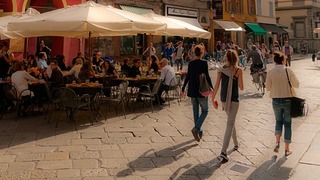
Do your long walks in the morning and late in the day when the sun is low. Plan indoor things for midday... or even plan on spending restful time in your air conditioned hotel room until later in the day. You won't miss anything... Rome, Florence, Pisa, Amalfi, Venice... they're all still there later in the day and in the evening--and less crowded.
| Wear Caps: This is especially important if you're prone to sunburn and to keep your kids from getting overheated. Don't worry about the non-cap wearing Italians who spot you for the tourist you obviously are. They can spot us anyway, even without a Yankee cap. Soak your kids' caps in fountains and slap them back on their heads to keep them cool. |

Yes, I'm serious. If you're traveling with a few little ones, pack a couple of small, good quality water pistols and let them shoot each other to their little hearts' content. They will have less tantrums and meltdowns if they're getting cool by getting wet. (On occasion, I'd sprinkle some water down my boy's neck to cool him down). If you're tight on space, pack a couple of kitchen sized plastic hypos. They can suck water up from a fountain and shoot pretty far with these things.
| Rent a Car: Not in the big cities, but if you want to explore the Italian countryside, by all means, rent a swagger wagon and crank up the air conditioning. Some cars, like the newer Fiat 500L (they call it "the Large" in Italy) even have a glove box cooler that works fairly well for a water bottle or two. |
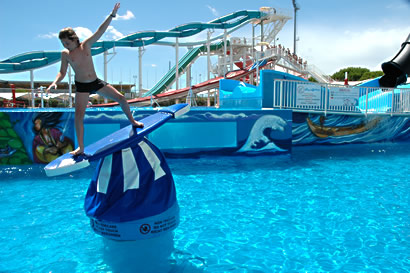
Yes, they have water parks in Italy too. Beautiful, big ones. Personally, I think this would be something a family might want to do only if they are staying for an extended period of time in Italy... after all, it's not like you'd experience anything about the Italian culture in a modern water park. But if you are staying in a hub location for three weeks or more, you might want to take a break and treat the family to some wet, cool fun at a local water park.
For example, just to the east of Venice in the resort beach town of Jesolo is Aqualandia, a large seaside water park 2 huge lagoon sized pools with a tropical island and other water slide attractions. One of the oldest and most famous water parks is Aquafan in Riccione one quarter of the way down the Adriatic coast side of the Boot. Again, I'd only recommend this for long term stays in Italy when your family needs a break from all the typical tourist activities and just wants to let loose and cool down. Personally, water theme parks are not my thing... I'd rather hit the real beaches in Italy...
| Try Walking Sandals Instead of Sneakers: If you decide to try this, find a good quality walking (hiking) sandal and wear them a while before your trip. Make sure that you will not develop any blisters on longer walks. If you find the right pair, they will save space (no sneakers) and save your feet from sweating on the hottest days. |
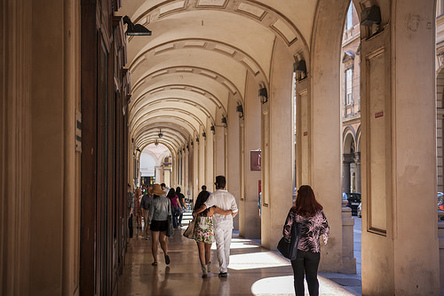
Only "Mad dogs and Englishmen go out in the midday sun"--that's what Noel Coward said. I'm sorry to say that my wife hasn't a clue as to what side of the street to walk on when it's hot and sunny. Lucas and Lisa might get miffed when I turn a corner and abruptly say "let's walk on the other side". They don't notice the broiling sun on one side and the shade trees on the other. Maybe I notice because I'm a lot older than both of them put together, I'm carrying more weight than ever before, and have that little balding spot that burns way too easily when I forget my cap. Perhaps the other reason is because light is my science--being a professional photographer. I pay attention to light and shadows. Walk on the shady side and stay 15 - 20 degrees cooler. Some walks in Rome, for instance, are on very long, sunny boulevards. If you're lucky enough to be walking in a town like Bologna, you can walk for 0ver 40 miles of arcades and stay out of the sun.
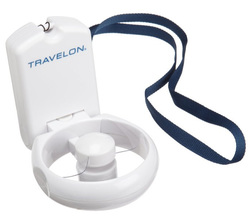
A battery operated fan can be useful in many situations when traveling in Italy during the summer. You can use it on a train, especially regional lines whose air conditioning or ventilators might not be operating properly. You can put it on your table during meals pointing right at your face and neck. You can use it in hotel rooms where the A/C isn't up to snuff. If you've just endured a long walk up to the Centro Storico of a hilltown, you can find a shady place to sit, pop out your portable fan and cool down for a few minutes until your body temperature comes down a bit. Hint: Wipe your face and neck with a Wet One and enjoy the cooling evaporative effect as you point the fan at yourself.
When you are at your body's limits on how much heat you can endure, look for a public potable water fountain and hold your head under it... wetting your hair and all. If you're sweaty and worn out looking anyway, who cares about how your wet hair will look... just think about how refreshing it will feel. This type of head shower will work especially well in the public fountains in places like Pompeii or towns like Lucca.
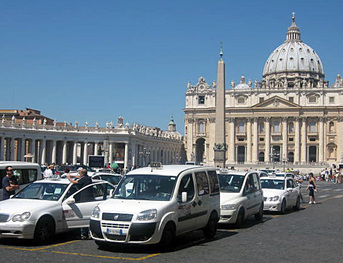
By all means, learn how to get a taxi in the large cities. Most cities like Rome have taxi stands where taxis wait on the cue (the one in front is the next one to take a fare). You don't hail a taxi in Rome unless they have a legal place to pull over. They are very affordable and will save both your feet and your sweat glands. Take a taxi up to a city center and then meander casually back to your starting point. In case your driver doesn't have his air conditioner set cool enough, ask "il condizionatore d'aria ... più fresco per favore?" (the air conditioner... cooler please?)
For more about taxis in Rome, read Rome Taxiphobia: Much Ado About Nothing.
Besides taxi stands, ask your hotel for the numbers of the best radio taxi services. They work like Uber--call them, tell them your location (more often, you need to do this in Italian!) and they will show up within minutes. The taxi meter starts running when the taxi driver starts out toward your location. You can also try Uber in Rome and Florence.
In places like the Amalfi Coast, use a car service instead of using the bus. The buses are not always on time and you might find yourself waiting for a long time standing in the bright sun on the side of a very narrow, busy, curvy road.
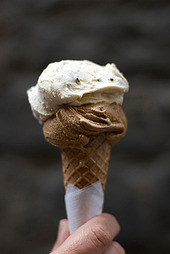
That's right. One of the easiest ways to cool down is find a gelateria (which won't be too hard as they are everywhere and pretty much are always open) and ask for a scoop (or two) of your favorite flavor. I'm sure you'll even find flavors that you didn't know were your favorite! And don't worry about gelato spoiling your kid's appetites. Gelato, although having less air makes it taste richer than ice cream, is far lower in fat and sugar than ice cream. Have gelato at 5 or 6pm before the 7:30 Italian dinnertime starts. And there's a lot more than just gelato... granita, semifreddo, sorbetto, grattachetta, shakerato (ice espresso). Check out my blog post Frozen... to learn more.
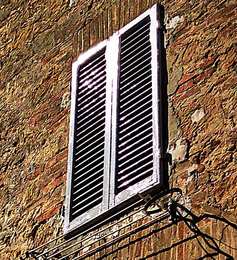
If you are staying in a hotel room or apartment or villa, they will most likely all have shutters. In the U.S. shutters have devolved into being only a decoration, screwed in the open position. In Italy they actually work and are a necessity. Close shutters in your rooms before going out for the day and your home away from home will be cooler when you get back. This is especially important for the midday period. There are a lot of family lunches and naps going on behind all those drawn shutters in Italian towns.
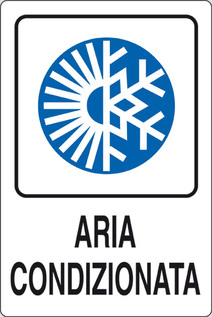
There are lots of steps and sloped walkways in Italy. Hilltowns are everywhere. If you are driving, most parking lots are outside the lower party of hilltowns--you aren't permitted to drive in the historic centers (centro storico). There will be a lot of walking uphill and lots of steps. For example, in Positano (on the Amalfi Coast) there are over 2000 steps that many climb to get high above the town to see the amazing views of the sea. On the Isle of Capri there are steep switchback paths that you need to walk to get down to the beach. Many towns in Italy have similar paths that used to be used for donkeys but are still used for getting from one place to another.
Air Conditioning:
Air conditioning in Italy isn't the same as here at home. First of all, Italians don't like drafts and might keep the air conditioning turned off completely or the temperature set at 78F (25C) instead 68F (20C). I even ran into one hotel that had a master control... you had to call the desk to have them turn it on, and they couldn't change the thermostat. It was one set temperature that definitely wasn't refreshing at all. If their system is broken down, chances are it won't be fixed during your stay.
The best air conditioning I've found is in the bigger cities and from "split duct" systems... the kind where you see a big bulky air handler unit mounted high on one wall. The radiator-looking systems barely cool at all. You might inquire about they type of air conditioning before booking an apartment, especially if you're planning a longer stay. Even in shops, restaurants and museums, I found most air conditioning systems to be way under par from what we're used to in the States. When you do find a very cool setup, savor it... you may not find it again.
There are 4722 miles of coastline in Italy, some of it are rugged and rocky, but most of it are beaches... everything from fine snow white sand to pink, to black to pebbles to rocky. You can take your pick from the chic Lido beaches of Venice to the Italian Riveria to the miles of pristine sand and rocky cove beaches of Puglia. Some beaches are packed like sardines with Italian families on their August holiday, many are overbuilt and crowded, while much of the Italian coastline (including Sicily and Sardinia) have mile after mile of some of the most unspoiled beaches anywhere in the world. And the great thing is (as in Puglia) many are just there for the taking. Free. Mother nature's gift to the tired and overheated traveler. If you want a natural beach experience, check out the Maremma in Tuscany (A Tuscan Beach Vacation: The Maremma). Don't forget to pack swim suits for summer travel!
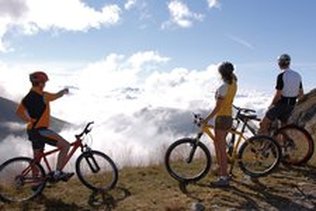
For nature lovers, trekkers, bikers and even skiers (at higher elevations), there is a great opportunity to stay cool in the Italian summer--the Italian Alps. With over 300 sunny days a year and much cooler temperatures than the rest of Italy, the Italian Alps, with its mix of Italian and South Tyrolean cuisine, is a wonderful way to beat the heat. The food here very different--there might be risotto, lardo (an paper thin-sliced herbed, cured lard) fonduta (Italian style fondue), Canederli (a sort of Matzo ball dumpling in broth), fontina and goat cheeses, sausages, wines and of course, beer. But the real star of the show up north is the world famous, UNESCO World Heritage Dolomites--amazing, jagged pinnacles jutting up from the top of Italy's boot. While there, you can ride cable cars up from the valley or enjoy adventure sports like paragliding, zip-lining, mountain climbing, river rafting and glacier trekking.
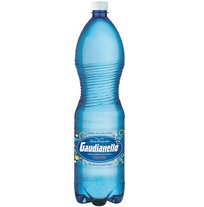 Gassata or frizzante... bubbly and refreshing.
Gassata or frizzante... bubbly and refreshing. First of all, American style sweet sodas might taste the same in Italy, but can be very costly, especially when purchased at street vendors in tourist areas and in restaurants. Another thing on sodas... you will not find diet soda. I didn't see one brand of diet soday in all of Italy when we were there. Instead, order large bottles of "gassata" or "frizzante" (both mean sparkling water). Order one large bottle with meals. If you want plain water, order a bottle of "aqua naturale". Add the word "fresci" or "freddo" to ensure that the bottle they bring has "fresh" or "cold" come from a fridge. Local alimentari (grocery stores) will have large bottles of gassata in their cooler or you can buy a large bottle to bring back to your hotel fridge. The only other soda I'd recommend in Italy is Fanta Aranciata (orange). It is different in Italy--and better--made with natural orange juice... a light, refreshing, sparkling orangeade. Personally, I find the Sanpellegrino orange and lemon sodas way too acidic.
Stay cool, or as Italians put it, mantenere il sangue freddo! (Keep your blood cool)
--Jerry Finzi
If you liked this article, please share it with your friends! Ciao!
You can also follow Grand Voyage Italy on:
Google+
StumbleUpon
Tumblr
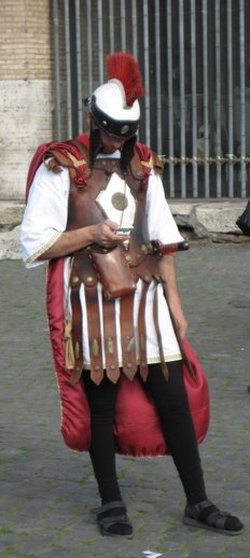
Even though Italy is short on cash, in 2017 it is going to start providing high-speed internet access at major tourist attractions, including all of its UNESCO World Heritage Sites.
Also in the plan to get connected: seaside resorts, historic cities, airports and train stations.
But is this just a scheme to get Italian Big Brother watching and following even more people? The Italian government in fact wants to create a nationwide WI-fi network, which users can access via a single personal login, but according to La Repubblica, such a system will allow data to be collected on where tourists are spending their time, and perhaps it's own citizens.
Officials claim that the system would make it easier for people to enjoy Italy's natural and cultural attractions. According to Antonello Giacomelli, from the Economic Development Ministry, "We need to integrate services as much as possible because the digital element is part of the complete visitor experience."
Really? My son Lucas, my wife and I just used our imaginations and our own senses to delve into the history and majesty of the Colosseum when we visited--I had no desire to get on my smart phone to do some surfing. We already have Google tracking us like this. If I even look at a camera I'm interested in, I will then be barrages with camera ads on virtually every site I go onto that uses Googles data. I wouldn't want that after visiting historic sites in Italy (or the Taj Mahal, for that matter... apparently, this is a worldwide effort linking public WiFi with data mining and advertising).
Italy has more World Heritage Sites than any other country--51 at this writing--from Pompeii and Herculaneum, to Palladian villas, the cave city of Matera and Sicily's Mount Etna.
This project is odd when you consider that Italy has a problem with state funding for the upkeep of its historic sites and have already used corporate moneys to restore the Colosseum, Trevi Fountain and more. Perhaps it's a scheme to sell the data from such a national WiFi system to pay for their maintenance.
As for me, I don't need WiFi when visiting such sites and soaking in the historic significance and culture.
Turn off your smart phones and just feel the history beneath your feet!
--Jerry Finzi
You can also follow Grand Voyage Italy on:
Google+
StumbleUpon
Tumblr
Copyright Jerry Finzi/Grand Voyage Italy - 2016
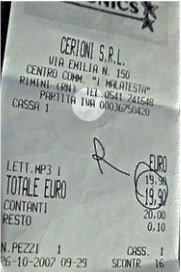 Note the "IVA" indicated in the circle--the tax is included in the purchase price
Note the "IVA" indicated in the circle--the tax is included in the purchase price First, you cannot get a refund on the tax on accommodations or food in Italy. There is an exception when traveling for business in Europe, but we won't get into that here. Any other purchases you make in Italy where you see the “IVA” added, are eligible for a VAT refund at the end of your vacation, including souvenirs, ceramics, clothing, jewelry, leather and even some services.
Keep in mind that there’s a minimum amount required in order to claim an IVA/VAT refund--currently in Italy the minimum purchase amount to submit a VAT refund is €154.94--all spent in one store at one time. So, for instance, if I want to buy an Italian guitar while in Italy, this would fit right in. It would also work when buying ceramics in a single shop Vetri Sul Mare on the Amalfi Coast--a town with many ceramics craftsmen (but won't work if buying a few things in several different shops). There are many interesting and unique shops in Rome, Venice or Florence that have a wide array of gifts perfect for the Voyager--either for yourself or gifts for loved ones back home. Planing your shopping sprees in shops that have a wide array of products is a great way to make purchase in one shop beyond the €154.94 minimum.
Other rules also need to be followed:
- Anything you bring back out of the EU is for personal use only (how would they know?)
- Purchases must be able to be exported (carried) in your personal luggage (If packed in your check-in luggage, you must open them at customs).
- Items must be reported and go through customs.
- Items must leave the EU within three months of the date of the purchase.
There are actually many merchants that will instantly remove the IVA tax as soon as you show them your Non-EU passport. Use your passport as leverage, making them believe you won't make the purchase if they won't remove the tax amount. This is one way to circumvent the entire refund process. But many vendors simply don't want to bother with the paperwork on their end. Keep in mind, however, that even if the merchant is willing to take the VAT amount off the purchase price, you’ll still need to get the receipt stamped at customs before you leave the country. Keep your receipts with each item purchased.
Here's why many people don't even bother about getting a refund--it can be a real hassle.
First, you need to ask the vendor about getting a VAT refund before leaving the shop. They need to give you a separate receipt--a copy known as a fattura--in addition to the one that comes out of the cash register. The fattura should include your name (use your passport as I.D.) and the amount of the IVA/VAT tax for the purchase. If there are blanks on the “fattura” for you to fill out, ask what information you need to fill in. Keep all forms and receipts, including the additional “fattura” receipts, in a secure place.
Ok... now part requires extra time at the airport when leaving Italy:
Gather together all your purchases (a soft, collapsible duffle works well for smaller carry-on purchases that might be fragile or valuable), along with their respective receipts and forms and then bring them to the local customs office at the airport.
When it’s your turn at the front of the special customs line, you’ll present all your receipts (and your purchased goods for inspection, if that’s required) and they’ll stamp everything. You then need to get those stamped receipts back to the merchant where you initially purchased the items. Yes--believe it or not. Many bigger stores work with companies with branches at airports and other international gateways in Italy (Global Refund and Premier Tax Free are two of the most common), which means you’ll need to take your stamped receipts to the appropriate agency’s office in the airport in order to get a refund on the VAT. You’ll either get a refund in cash right then, or they’ll refund your credit card. They take a small cut of the total amount. If, on the other hand, the merchant from whom you made your purchase doesn’t work with one of those in-airport agencies, then you’ll need to mail your receipts back to them directly, either from the airport before you leave or from home.
I know what you're thinking... That you may never hear from the merchant again and never see a refund anyway. This is possible, but many shops are fairly honest and will honor the request for a VAT refund. You might get a refund sent to you in Euros, requiring a fee for converting to dollars again. Complicated, right? This is why many people forget about VAT refunds. It is a real hassle. Of course, this is even more incentive to use your Passport as leverage when making the original purchases... try really hard to get them to take the VAT off voluntarily, or you won't buy. It does work.

The best way to avoid the hassle is to shop in stores that display a Tax Free Shopping or Euro Tax Free sign in their window. There are enough shops with this logo displayed in the larger Italian cities to satisfy your shopping needs.
In these Tax Free Shopping stores, you’ll need to show your passport when you make your purchase, and they will give you a check for the VAT amount along with the receipt for the goods. When you get to the airport, you’ll need to go to the line at the customs office for VAT refunds and have your receipts stamped, and then take the receipts--along with the check the merchant gave you--to the “Tax Free” booth in the airport where they’ll give you cash for that check. These booths are typically near the airport’s Duty-Free Shop. That's a bit easier, right?
- Look for stores displaying Global Blue Tax Free Shopping signage in the window.
- When paying for your purchases ask the shop staff for a Tax Free Form.
- Tax Free Forms are available in three versions: one blue, one white and one similar to a credit card receipt. Fill in all the required fields in block letters, using the Latin alphabet.
- Receipts can be accumulated to reach the minimum amount if the purchases were made on the same day and in the same store.
Remember: Incomplete Tax Free Form = No refund
- At the airport, allow enough time for the refund process before your flight departs.
- Before you check in for your flight, go to the Customs desk and present your completed Tax Free Form, passport, and purchases to get a stamp on your Form.
- The goods have to be sealed and unused. Don’t pack them away in your check-in luggage as you will need to show them to the Customs Officer.
Remember: No Customs Stamp = No Refund
- Go to a Refund office displaying the Global Blue logo.
- Present your stamped and completed Tax Free Forms to receive the refund in cash or to credit card.
- You may also opt to mail your stamped completed Tax Free Forms to the address of the Processing Centre and receive your refund on your credit card .
- Please observe that at some airports a cash handling fee per "Form" will be charged should you require an Immediate Refund in cash.
The refund you receive is the VAT minus Global Blue’s service fee.
- Refunds are paid on all goods that are exported in the traveller’s personal luggage.
- If goods are too large to be carried in hand luggage, it is recommended to contact the Customs in advance.
- VAT is not levied on books and therefore refund cannot be obtained. The purchase amounts for books are counted to reach the minimum purchase amount if the books are bought at the same time as other VAT qualifying products.
Additional Tips
- The post delivery is free of charge from all the world if you use the Global Blue prepaid envelope provided by the shop. Note that it is sent by regular post.
- If you have not received the prepaid envelope you can use a standard envelope (at your expense)
- In order to prevent a possible loss of the documents, we recommend you to use secured mail service (e.g. registered mail or courier- at your expense)
- Before sending the documents, please make a copy of them or write down Tax Free Form number (DOC ID) of each Form for your reference.
- In order to assure smooth processing of your refund send us just Tax Fee Forms filled in completely and correctly
Ok, so after going through all of the above, here's an even simpler way to do some tax free shopping in Italy...
Whether you’re a frequent international shopper or planning a special trip abroad, you can easily save both time and money when you shop tax free with the new Shop Tax Free Blue Card. Membership is free!
The Shop Tax Free Blue Card allows you to claim your tax savings without the hassle of filling in Tax Free Forms by hand in busy shops each time you buy something. With a swipe of your card all your details will automatically be filled out on your Tax Free Form which is then printed out for you by the sales assistant. In this way, language communication problems and mistakes are avoided and you save time and money for a more convenient and enjoyable Tax Free Shopping trip.
Global Blue works with around 270,000 stores worldwide so you can enjoy the benefits at participating shops and take advantage of member only promotions.
LINK: Shop Tax Free Blue Card sign-up
The Global Blue App from Google Play (for Android) and iOS (for iPhone and iPad) connects travelers to the world of Tax Free Shopping with just one click. Global Blue’s app will guide travelers to the very best stores in many European cities, with full contact details and interactive maps. You can search the app for stores by location, product or brand.
The Global Blue App also helps a shopper to figure out their savings with the Tax Refund Calculator and step-by-step instructions on how to complete the Tax Free Shopping service. A re-engineered Refund Tracker is coming soon. Do a search in your favorite app store on Global Blue.
--Jerry Finzi
You can also follow Grand Voyage Italy on:
Google+
StumbleUpon
Tumblr
Copyright Jerry Finzi/Grand Voyage Italy - 2016
So I looked into it a bit. There are definitely benefits to having an Italian passport:
- Live, work, retire, go to school, and travel freely in 27 European Union (EU) countries
- Reconnect with your cultural background and strengthen the fabric of your heritage
- Travel safer abroad
- Pass on the lifelong gift of Italian Dual Citizenship to other members of your family--One of the most basic reasons why Italian dual citizenship is beneficial is the fact that you get to pass it on to your children (and their children and their children's children in perpetuity) in an unbroken line of Italian citizenship.
- College education is available for Italian citizens in state supported universities for as little as 1500 Euro per semester. As long as Italy is a member of the EU, you can also attend EU universities in other EU countries as well.
- Access financial investment rights available only to EU citizens
- For the uninsured or under-insured, healthcare in the U.S. can be expensive. As an Italian citizen, you are entitled to apply for your tessera sanitaria to receive Italian healthcare which is world class and much more affordable when compared to healthcare in the U.S.
- Seek health care/drug treatments that may not be available in the United States.
- Access educational benefits, including potentially free higher education
- Leverage tax shelters and benefits
- Benefits when purchasing property in Italy. Having Italian dual citizenship entitles you to much less paperwork and legal hassles when buying or renting property.
According to Italian law, a qualified person can claim their Italian citizenship through Jus Sanguinis, the Right of Blood. The basic principle is that Italian citizenship is passed from father (or mother, only since 1948) to their children, even if those descendants gained citizenship in another country (such as in the U.S.) simply by being born there. The key is that the ascendant born in Italy and who immigrated to the US must have been an Italian citizen (i.e. not been naturalized as a US citizen) when his or her child was born. Italian women did not win the right to pass on citizenship to their children until 1948. Therefore, people born prior to Jan. 1st, 1948, can only claim citizenship from their paternal line, while those born on or after Jan. 1st, 1948, can claim from either their maternal or paternal line.
There are many circumstances under which a descendant of an Italian citizen can qualify, but it might be difficult to provide the dates and many documents to satisfy the Italian regulations. Many people who have attempted to get their Italian citizenship have reported the process can easily take a couple of years and well over $1000 in fees to research and gain copies of documents, and in hiring a representative in Italy to act on your behalf in obtaining all the required Italian documents.
The Legal Principals
Jus sanguinis is Latin for "the Right of Blood", a legal principle of nationality law in which citizenship is not determined by place of birth, but by having one or both parents who are (or once were) citizens of the state. Children at birth may automatically be citizens if their parents have (or had previously) state citizenship or national identities of ethnic, cultural or other origins.
The nationality law of Italy bestows citizenship jure sanguinis. There is no limit of generations for the citizenship via blood. However, the first citizens of the modern Italian state were alive on 17 March 1861 when the state was officially formed, and for this reason all claims of Italian citizenship by jure sanguinis must stem from an ancestor who was living after March 16, 1861. Each descendant of the ancestor through whom citizenship is claimed jure sanguinis could pass Italian citizenship to the next generation only if this descendant was entitled to Italian citizenship at the time of the birth of the next person in the line. So if any person in the line lost the Italian citizenship and then had a child, that child did not inherit Italian citizen jure sanguinis, except if the child could inherit the citizenship from the other parent.
Cases of dual citizenship were possible, which is to say, for example, that a person in the line could have had Italian and Canadian citizenship concurrently. Minor children of Italian citizens were at risk of losing Italian citizenship if the child's parent naturalized in another country, unless the child was subject to an exception to this risk—and children born and residing in a country where they held dual citizenship by jus soli were subject to such an exception since 1 July 1912.
Until 1 January 1948, Italian law did not generally permit women to pass on citizenship. Persons born before that date are in most cases not Italian citizens jure sanguinis if their line of descent from an Italian citizen depends on a female at some point before 1948. On several occasions, this limitation of deriving Italian citizenship only from fathers before 1948 has been successfully challenged in court.
For more information:
MyItalianCitizenship.com
Read this case history of how one person succeeded in getting their Italian citizenship.
--Jerry Finzi
You can also follow Grand Voyage Italy on:
Google+
StumbleUpon
Tumblr

First of all, when you pick up a phone and answer it, you use a word that lets the person on the other end know that you are ready to talk. That word is "Pronto" (literally, "ready"). There is good reason for using this particular word in Italy. You would never use "ciao" simply because it would be vague in this situation. "Ciao" can mean both "hello" and a very casual, "bye-bye". So, instead, Italians let you know they are ready to speak or listen. When answering the phone, say "pronto".
It is also possible when calling someone who is younger with a more casual attitude toward etiquette, or perhaps a local auto repair shop answering the phone in a hurry, you might hear someone say "Dimmi!" when answering their phone. This literally means "Tell me!" If you hear this, don't be put off by it... it's just a more casual, modern style of answering the phone.
When you have initiated the phone call, after hearing the other party say "pronto", you may then use "ciao" (hello), "salve" (a more casual "hello"), "buongiorno" (good day/good morning), "buon pomeriggio" (good afternoon) or "Buonasera" (good evening) before introducing yourself. Italians are formal with strangers, so don't pass this step by.
The next step is introducing yourself. Say either "mio nome è (your name)" or "mi chiamo (your name)". The first has some liaison that merges the "nome" with the "è"... since they both make the same "ay" sound (NOM-ay and ay), so I would pronounce it as "ME-o NOM-ay Jerry Finzi". And remember that the "ch" has a "K" sound, so "mi chiamo" would be "ME kee-AMmo.... ".
Another way to introduce yourself would be to simply say, "Ciao, sono Jerry Finzi" (Hello, I am Jerry Finzi".)
When you pronounce your own name, learn to say it the way an Italian would. I need to roll the "rr" in "Jerry" and pronounce the "z" almost like a "T" sound, the way Italians do. A great tool is Google Translate where you can enter your own name and then, by pressing the speaker button, hear it pronounced in Italian. If you don't try to pronounce your name like an Italian, they may not be able to easily spell it when writing it down. Oh yes... and learn how to pronounce the Italian alphabet. The letters are the same, but you pronounce them very differently when you spell out a word. Here's a video to help you learn how to say the alphabet in Italian:
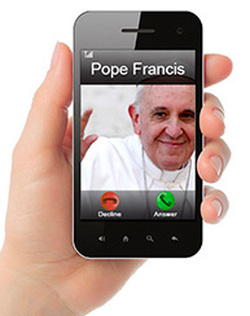
Ok, so you can't speak much--or any--Italian, and want to speak to someone who speaks English. You can say, "Posso parlare con qualcuno che parli inglese, per favore?" (Can I speak with someone who speaks English, please?) or "C'è qualcuno che parla inglese?" (Is there someone who speaks English?")
Of course, use the word "grazie" (thanks) when appropriate to respond when people are helpful and responsive. Do not mispronounce it as "GRAT-zee" or "GRAT-zee-ah"("grazia" means "grace"). Instead, try to pronounce it properly as "GRAT-zee-ay". The "ay" is there, but soft at the end. If you listen carefully to locals, you'll notice the three syllables.
The end a conversation, say "ciao" (an informal "bye-bye") or "arrivederci" ("goodbye" - more formal or businesslike). To thank them for helping you, say "Grazie per l’aiuto". (Thank you for the help.)
You can also use "Buona giornata" meaning "have a good day" (not "buongiornata", which means "good morning" or "buongiorno" meaning "good day/morning"--more commonly used as greetings). Essentially, when you separate "buonA" in front of the time of day "pomeariggio" as example), you are saying "have a good ____".
Here is a bit tip for when you have to make a very important call and need to say very specific things--for business, medical emergencies, asking directions, etc.). Use Google Translate ahead of time to translate some phrases for you to use during your conversation, and then save them in Translate's phrasebook as a favorite by pressing the star button. You can then use the phrasebook like a script to keep you on track during the conversation.
If you need to leave a voice mail message, keep it short. Italians think it's rude to leave long, rambling messages.
"Jerry Finzi qui. Richiamerò più tardi. Non chiamarmi, ti chiamo."
(Jerry Finzi here. I'll call again later. Don't call me, I'll call you. )

The inventor is pushing this for two language, cross translations, but I think this is also a great tool for people (like me) who already know a lot of basic phrases and responses in a particular language, and want to fill in the gaps when people speak to them. For example, it would be great for me if I had to go into a situation that requires a bit more jargon or nuance--like at an auto repair shop or doctor's office. I could hold my own in restaurants and shops with Italian, but a doctor might talk too fast with too many specialized words that I never learned or have forgotten. This device might help...
With its smart phone app, it's possible to quickly toggle between languages quickly. This would have been helpful when I had a lunch in Altamura at a table with new friends speaking 4 different languages.
I hope this product makes it to market... and I hope it actually works well. For $129, I think its price point is right on.
--JF
- You don't really need to see the "Big Three" to enjoy Italy (Rome, Florence and Venice). Although these cities are amazing to see, they are increasingly crowded, full of tourists, expensive and will exhaust you with waiting on long lines--often for hours.
- Go off the beaten path. Find towns no one has ever heard of. Drive down the Autostrada and take an exit and follow your nose. You will always find an interesting, historic and beautiful little town in any part of Italy. That's where you will really get a feel for the real Italy.
- Tuscany is beautiful with dozens of well known (and touristy) hilltowns to visit. There are hundreds more smaller towns that are not as crowded or well known with beauty and great things to see. Again, try to find the hidden gems.
- Italy is a lot more than just Tuscany, Florence or the Under the Tuscan Sun craze in Cortona. From the hills of Langhe to Puglia in the south with its trulli, cave towns and pristine beaches. If you love food, then travel to Romagna, where there are fewer tourists and amazing discoveries.
- Tipping is not required. Table waiters get paid as high as entry level white collar workers--with benefits and a full month vacation each year. In taxis you can round up if you'd like. In restaurants, it's not needed. Tour guides do boldly hold their hands out. Tipping is up to you in these situations.
- Pick pocketing is an issue in larger metropolitan areas like Rome and Venice, but it’s not any worse than New York City, London or Paris. Act like a big city person and you'll be fine. Act like a mindless, careless tourist and you'll be ripped off.
- Newspapers and magazines are bought at an edicola, and sometimes in tabacchi (tobacco shops).
- Pay attention to billboards, TV ads or ask hotel managers or other locals about any Feste or Sagre (street fairs, festivals) going on in your location. Usually based on a saint day or a particular food harvest, these are worth searching out, but be aware that these bring crowds--especially the locals.
- Dates are written as day-month-year, i.e. 18/5/15 for May 18, 2015.
- Times are indicated in 24-hr format. Simple trick... just add the hour after noon-time to 12 to get the conversion... 12 + 1 o'clock = 13 hrs, or 12 + 7 o'clock = 19 hrs. 8am is still 8 am.
- Italy uses the metric system for measuring everything. 2.2 pounds = 1 kilo. 1.6 kilometers = 1 mile.
- Airport and rail stations have public restrooms, many with attendants who expect to be tipped--leave a few coins. If it's filthy or doesn't have a toilet seat, leave nothing by a stern look. Also, keep coins with you (especially 1 Euros) as many toilets are coin operated, especially in privately owned tourist spots.
- By law, bars and cafes have to let people use the restrooms, even if you aren't buying anything.
- Pack some tissues in case there is no toilet paper in restrooms.
- Churches require all women to cover their shoulders and legs--no shorts. Men should remove hats.
- Credit cards are widely accepted, but just like in the U.S. there might be a minimum like 10 or 20 Euros. Carry extra cash for the smaller purchases.
- Public phones are not extinct. You will still find them but they can be difficult to use, especially with a credit card. When we went to Italy, we just arranged beforehand with our carrier (Verizon) to turn on their "World" plan so we could use our mobile phones in Italy. You should study up on how to dial numbers for in-country calls and calls back to the U.S. though.
- Many small shops have "shopping assistants" that will walk with you, ask to help find your size, and carry the clothing with you. Don't be offended if they won't let you shop alone, it's just the high degree of prideful service you are given in shops across Italy. Wrapping your purchases can be a real complex event!
- To be blunt, if you are overweight, avoid shopping for clothing in Italy. Although there are some "plus size" women's clothing chains in Italy, they are hard to find. The same is true for men. Most shops cater to very small sizes and simply will not have anything close to your size.
- Store exchange policies are rare.
- Shops close for lunch between 12 noon and 3 or 4pm. Everything shuts down by 7:30pm. Only in Rome have I seen shops open longer.
- Restaurants are closed for lunch. Go to a "bar" (a place for espresso and sweet things for breakfast, and smaller fare for lunch) for a sandwich or other small food items or plan to buy things for a picnic early in the morning at alimentari or markets. Again, in larger cities like Rome or Florence, you will find more open for lunch, especially near tourist hotspots.
- Restaurants open for dinner between 7:30 and 8pm. Plan late afternoon snacks or a trip to a gelateria to tide you over until dinnertime.
- In large towns, cities and large metropolitan (suburban) areas, stores are open on Saturday but closed on Sunday.
- Do banking in the morning when they are open. Otherwise, they close for a long lunch and reopen for another hour later in the afternoon.
- Most, but not all National Holidays in Italy are religious in nature:
- January 1st, New Year’s Day
- January 6th, Epiphany
- Easter Sunday
- Easter Monday
- April 25th, Anniversary of Italy’s liberation
- May 1st, Labor Day
- June 2nd, Anniversary of the institution of the Republic
- August 15th (Ferragosto), Assumption
- November 1st, All Saints
- December 8th, Annunciazione
- December 25th, Christmas
- December 26th, St Stefano.
- You have to wear plastic gloves to pick up food in the produce section of the grocery store. Look for them nearby the produce. In markets, point to the fruits or veggies that you want--usually the grocer picks for you.
- In large supermarkets, bag your own groceries and pay a few cents for the bag or bring your own reusable bag. In alimentari, they will sometimes offer a bag if you don't have anything.
- Many Italian hotels include a typical Italian sweet breakfast, i.e., coffee, tea, breads, cornetti, jams.
- Try going to a bar for breakfast. Get out early and order an espresso and cornetto and eat it like an Italian standing at the counter. If you want to sit to have your coffee or refreshment anytime during the day, there might be an extra table charge.
- Cappuccino is a morning drink--with breakfast. Italians consider the addition of milk to be a breakfast thing.
- In bars and snack shops and some fast food chains, you ask for what you want first, then carry the scontrino (receipt) to a second person who fills your order, then tears the receipt (so it can't be used again) and gives it back to you.
- Europeans don't use much ice. If you ask for ice, they will either bring back a couple of cubes and drop them into your warm drink (where they will disappear instantly) or place a small dish with a few cubes on the table. Beforehand, ask if the drink you are ordering is fresca (fresh) or freddo (cold).... "La Coca Cola, e freddo?"
- There are some restaurants that offer take out food, but these are rare in Italy. Usually you can get food for take-out (per porta via--for road carry?) at fast food and snack shops (rosticceria) that have panini, pizzas and the like. If they have some tables and chairs but you are ordering at the counter, they might ask "per mangiare o per portare fuori?" (eating here or for take out?)
- A great way to get an early meal is to go to a bar for Aperitivo between 6pm and 8:30pm. It's sort of like cocktail hour with free food. Some small town bars might only offer chips and pretzels and the like, but if you search out the best aperitivo buffet bars, you will find a fairly big assortment of things to nosh on.... making finding dinner unnecessary.
- Normally, bread is not given with dinner, but in tourist areas, they might put bread (and even butter) on the table--but there might be a charge for it! There is no such thing as dipping bread in a little bowl of olive oil, like in U.S. faux-Italian restaurants (Olive Garden... ugh). Italians might drizzle olive oil on top of bread, but their main use for bread at dinnertime is tearing off pieces and using it as a scarpetta (little slipper) for sopping up the sauces left on the dinner plate.
- Italians are superstitious about bread: never ever leave it upside down on the table (bad luck) and never stab it with a knife (it's like stabbing the body of Christ).
- There are no doggie bags in Italy. The portions are not over-sized like they are in Italian-American restaurants, so this shouldn't be a problem.
- Salad (insalada) is considered a separate course in a meal. You'll never see a salad served before the Primo course.
- Italian weddings have at least 15 courses, with guests typically feasting for 5 or 6 hours.
- Restaurants serve only bottled water when it's asked for... either gassata (gassy) or naturale (non carbonated). Save money by not ordering sodas and get a large bottle (bottiglia) of water for the table. Sodas can be more expensive than wine in most restaurants.
- Most water is safe in public fountains but if not, will have a sign saying "non-potabile". So, no sign - OK. You'll save a lot of money by refilling sport or thermos bottles from public spigots. (I am referring to water spigot "fountains", not decorative ones).
- In general, coffee is not a "take out" drink in Italy. You drink espresso in china cups at coffee bars. However, there are snack bars at places like train stations where you can get a "per porta via" caffe in a plastic cup.
- Cheese is never used in fish recipes.
- Salad dressing is oil and vinegar, perhaps a sprinkle of balsamic.
- There are over 100 different types of pasta in Italy, with each region have their specialties.
- Waiters and waitresses are salaried in Italy, and restaurant owners don't expect to have more than one seating per evening. Take your time with dinner. Don't rush. You can sit their for many hours and enjoy the food and conversation.... it's the Italian way.
- Waters won't bring the check until you ask for it (il conto, per favore). The waiter considers it impolite to bring the bill before being asked.
- When ordering food at a restaurant, there are no substitutions.
- There is no Alfredo sauce in most restaurants, unless you go to Il Vero Alfredo across from the Augustus Mausoleum Alfredo sauce is not Italian. It's more of a tourist dish in Rome and unheard of in the rest of Italy.
- Cioccolata calda (hot chocolate) is much richer in Italy and although you can order it with breakfast, it's considered more of a merenda (snack)
- Grated aged cheeses (like Parmigiano Reggiano or Grana Padana) are typically used on top of pasta along with traditional sauces. Italians don't put grated cheese on pizza. Shavings of of parmigiano will be served over bresaola or carpaccio.
- Nothing but pork products (ham, prosciutto, pork sausages) are considered appropriate meat for pizza in Italy.
- There is no chicken Parmesan in Italy. In fact, there are no pasta dishes that include chicken as an ingredient.
- Many Italians--especially the under 30 crowd--speak some English, and many are very willing to test their English on you. Just be sure to test your Italian on them also.
- Soccer is called wither football or calcio and when there are games on Sundays, a large part of the population is obsessed.
- Girl watching is is popular in Italy. Most flirtations are harmless with men calling women endearing names like "Bellissima", "Contessa" or "Carissima". Men will stare at women more boldly than in the U.S. Simply smile and perhaps say gratzie, and keep moving.
- The second most popular sport in Italy is car racing. Formula One is king, but any race is as important.
- Cycling is still huge in Italy.
- Azzurro, light blue, is the color of every national athlete’s jersey.
- Italians tend to shower at night, and change to clothes to compliment their bella figura before going out for the evening, whether to a restaurant, bar or a simple stroll during passeggiata.
- In Italy it is not socially acceptable to be drunk. An Italian would be shamed if caught drunk.
- Business formal is the norm for all office and sales jobs. For men, wearing a tie is appropriate for the workplace.
- Men still wear Speedos on Italian beaches, even when they don't have the body to go with it.
- Topless sunbathing is common on northern beaches, and not so much in the South.
- While in the US temperature in public places is determined by the one who feels hot (and hence she is the one who lowers the temperature in the space), in Italy the one who’s cold is always right and her requests will determine a room’s temperature. Italians are more sensitive to drafts than Americans.
- Air conditioning in Italy is never really cold.
- Chrysanthemums are only for funerals in Italy.
- When entering someone’s house, ask “Permesso?” --for permission to enter.
- Lines (post office, bank, bar, bakery, etc. ) are never proper lines like Americans are used to. Be assertive when waiting your turn in Italy. Say "Sto accanto!" (I'm next) forcefully when you feel it's your turn. Don't let people get ahead of you.
- Purple is the color of lent and is thought of as an unlucky color. Never wear purple to a wedding.
- Driving in Italy is terrible, especially in cities or on tight, narrow roads (read more about driving on the Amalfi Coast here). Keep your right, be alert, and watch for scooters and motorcycles using the white line as their personal lane. Stop signs and lights mean little.
- Read up on the ZTL zones (Zona Traffico Limitato) before driving in Italy. These are No Drive zones.
- Don't plan on driving in Florence, Rome or especially Naples.
- You can't usually hail a taxi in Italy, but you might get one to stop if he is empty, not headed to a radio call, and you are on a wide street where taxis are allowed to stop. Just try to get taxis at taxi stands and you'll be fine.
- If you call a cab, the meter starts running when the driver starts to come to your location.
- The left lane in the autostrada is for passing only.Leave your left blinker on while you are in the left lane. Turn left blinker off when you return to the slow lane.
- Make sure you respect the speed limits. Relax and stay in the right or middle lane on highways. Contrary to general assumptions, and especially in recent years, police has gotten very strict about speeding and automated cameras that photograph your plate number are in use all over Italy. You'll get a ticket in the mail in 6 months to a year after you've returned home. Many smaller towns also have automated speed zones too. Just pay the fine if you get one.
- If someone flashes their brights behind you, it’s because they want you to move to the right lane so that they may pass. Don't take this as an aggressive move... Just pull over and let the person pass. Whatever you do, DON'T flip the bird to an Italian man. It's WAY more offensive in Italy than in the States!
- Before boarding a train you need to validate your ticket. You will have to validate your ticket directly on buses too. Italian time tables are not accurate all the time. Expect delays.
- Scooters, bicycles and motorcycles share the road with cars, and they will zip by on your left and right in a one-lane road or on blind curves!
- It’s hard to pay for gas with a credit card, especially after operating hours other than on the autostrada. Have lots of Euro coins handy, especially if traveling on a Sunday.
- No right turn on red, but then again, Italians never pay attention to red lights or stop signs.
- In Italy, cars are extremely important and usually are babied. Italians remove trash from their cars every day. However, they care little about littering the countryside.
- Italians will drink beer, gassy water or soda with pizza.
- Pesto in Italy is only used as a sauce for pasta.
Please LIKE this post or share it... grazie.
Copyright, Jerry Finzi, Grand Voyage Italy, All rights reserved
.
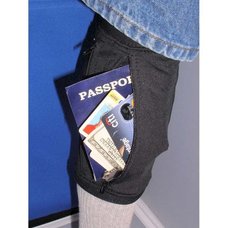
So, other than keeping aware at all times and never looking like a distracted, confused tourist (fumbling with a ticket machine for a train, texting while waiting in a line, or looking at a map while standing in the middle of a piazza), what can we do? There are lots of security devices for travelers. The leg wallet is something I thought might work for keeping extra cash, the emergency credit card or our passports. When I got it I was amazed at how well it fit... sort of like a snug sock. I'm certain it won't slip off. There are two zippered compartments that can fit a decent amount of stuff. My wife also had a teeny bra wallet (a satin sack to hold a couple of cards) but this leg wallet will work for most of what we need to secure. To be honest, the bra wallet was pretty useless since I held pretty much everything safely in my leg wallet.
UPDATE: The leg wallet was a great way to secure three passports, extra cash and a couple of back-up credit cards. It never slipped down my leg and as long as I was wearing long pants, no one knew I had it on. It was much better than the money belt wallet I also brought, which I never used. My only complaint was that on very hot days it tended to chafe a bit on the top end where its elastic was.
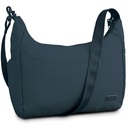
The Pacsafe (there are smaller and larger models) is designed for safety. The strap has a wire in it so it can't be cut. The strap also has locking latches which are easy to open, wrap around a table leg (as you are having lunch) and lock again. Most of the zippers can be locked. The fabric is tough, water repellent and cannot be cut with a razor. Inside there is a compartment that has RFID protection. If you don't already know (we recently learned about it), lots of credit cards and passports now contain a chip "for our convenience" so we don't have to break a sweat by swiping a card... just sort of wave it, or recently, sticking into a slot and waiting even longer for the transaction to be completed... yea right. For $100 a thief can buy a scanner, plug it into a laptop, put the whole thing into a messenger bag and scan people's card info within 3'... sometimes further. (What are they thinking? Just because you CAN doesn't mean you SHOULD build these things!) RFID protection is a shield against this (although I heard that wrapping your cards and passports in aluminum foil works just as well).
This bag holds a lot but the water bottle pocket on the side was a bit snug for our tall Thermos brand bottle. Still, it is yet another barrier against the filthy, sticky fingers of little thieving kids and bogus priests alike.
UPDATE: For travel, Lisa thought the bag was heavy, bulky, unattractive and she couldn't find things inside easily. Personally, I think she missed her good old mule bag, which was actually a tad bigger. Also, she might have thought it was heavy because at times she was carrying an extra water bottle--something that I couldn't fit into my messenger camera bag (which itself was always overloaded with most of our tech stuff).
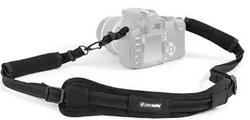
UPDATE: I wound up not using this strap for my camera. Instead, I used a hand strap which I prefer for shooting... the camera hangs onto the end of my hand as an extension of my arm. Much less likely to tangle when putting the camera back into the bag. Remember, I'm a pro shooter and just happen to like having my camera attached to the end of my hand. If you are used to straps, this is a great product.
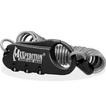
Simple.
UPDATE: We did use this lock all the time when hanging out in train stations. We'd cable all the bags together and huddle around them, putting the bags against a wall. The cable lock made it less likely that anyone could actually snatch and run off with a single bag.
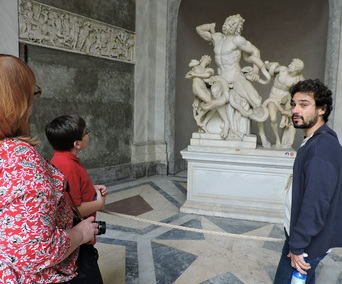 Marcello, our sniffly, sneezy, he'd better go home and rest tour guide.
Marcello, our sniffly, sneezy, he'd better go home and rest tour guide. The next morning the taxi driver was on time and so were we. That was a good thing, because radio taxis start the meter when they get the call from their dispatcher, not when you get in the car. The driver was great, spoke English, and got us there without cheating on the fare. We heard that some try the trick of pushing the "tariff 2" or "tariff 3" buttons (for outside the town walls) instead of "tariff 1" which can triple or quadruple the fare. Pay attention, and say something if it's not set to "tariff 1".
We got to the meeting point at the bottom of the stairs on Via Tunisi, just below the entrance to the Vatican Museum, and saw all the large tour groups cuing up. We went for the extra bucks and got a private tour so we wouldn't get lost in a herd of sheep, and to go through faster because of my lousy knees. When I saw the size of some of the tour groups (especially from the cruise ships), I was glad we weren't part of the cattle following a tour guide, wearing an earpiece (it's so loud in the Vatican at times it's impossible for groups to hear their own guide without a headset) and following the colored flag on a pole.
After a half hour wait Marcello arrived... (we paid for an earlier entry time... now that was blown!) He spoke English with a slight Italian accent and as it turned out was born in Houston, Texas but moved to Italy when he was 13. Ciao-dy!
As we started up the stairs and toward the entrance we felt a relieved when Marcello led us past the flocks and into the entrance. He waved his tour guide I.D. ward casually and got us quickly past the checkpoints in the surprisingly modern interior of the entrance mezzanine. Even though it was very modern, we sensed no air conditioning! (It was hot). He started the tour by telling us the history of Rome itself and how the Vatican came to exist--informative but a bit dry--even though I had told him ahead of time to keep things simple but interesting for an 11 year old. Our bags went through the X-ray belt and we were on our way up and around and into the museum--at first by modern escalator, then by steps.
We went through hall after hall and saw more and more art, sculptures, tapestries, frescoes and became aware of the unimaginable wealth of the Roman Catholic Church. Of course, my childhood idols were there... Boteccelli, Raphael and Michelangelo. The tapestries were wonderful, but I've seen some in better shape and under better care in other museums, including the Cloisters in New York. I'll be honest, I thought some the frescoes that were restored looked flat and lifeless. Perhaps they cleaned off too much of the subtleties from the hands of the Masters.
There was even a section under the Sistine Chapel that contained a treasury of modern masters... Chagal, Mattise and others. What concerned me is the complete lack of climate control for all these treasures of mankind. There is no air conditioning and most of the windows were open allowing the pollution, humidity and heat of the day to permeate the exhibit halls. I was sweating like crazy after a while... imagine the tens of thousands of visitors they cram through there every day.... all that body heat, humidity, body oils, etc. They make 70 million dollars a year on Vatican ticket sales and they don't spend a dime on climate control? Shame on them. As a lifelong artist I was shocked at the lack of at least a minimum of basic care for the art and the architecture itself.
Pardon this rant... The unimaginable wealth and hoarding of the treasures the Catholic Church could be put to better use in helping the needy in the world. Selling off their Chagal collection alone could potentially solve the ebola crisis in Africa, for example. Much of the art in the lower chamber (I believe it's under the Sistine Chapel itself) has nothing to do with Catholicism or religion of any kind.
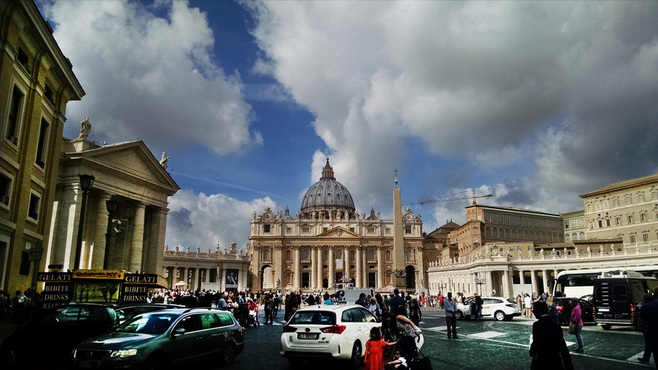 St Peters Basilica, photo by Lucas Finzi
St Peters Basilica, photo by Lucas Finzi Anyway, the big moment came when we were about to enter the Sistine Chapel. Oddly, tour guides are not allowed to speak inside the Chapel. Because of this, guides need to explain what visitors are about to see before they even get close to the Chapel. Marcello briefed us in a dark chamber by pulling out a book and turning the pages as he explained what we are about to see. (The shorthand version). You'd think with all their millions in revenue the Vatican Museum would install a proper orientation exhibit to educate visitors before they enter... videos, slides, displays, etc. Heck, even our local canal barge museum has an orientation video before you take a ride on the canal, and the Crayola Factory in a nearby town has excellent, world class multi-media presentations! I mean, after this is the Vatican!
After Marcello finished showing us photos in his dog-eared art book, he led us through more rooms and then upstairs (no elevator... people with walking issues need to be ready for this) and into the crowded Sistine Chapel, saying he would meet us near a back door in 10 minutes or so. Ten minutes? When I was a young man, I heard of people spending all day, often laying on the floor with binoculars to soak in the wonder of the Ceiling. Ten minutes?
We were now on our own--with about 1000 or more other people from large tour groups... shoving Chinese, rude Italians and pushy Germans (forgive me, but I'm just pointing out my observations). After a little while we luckily found seats against a side wall (Knees to Babbo, "Thank You!") and sat gazing up at the magnificence of Michelangelo's genius. Lucas was surprised when he realized that the architectural details like moldings and columns were all Trompe-l'œil (tricks of the eye)... all painted to look three dimensional. He also liked the Creation of Man... the famous God touching the hand of Man scene. I loved the Temptation of Adam panel. The bright colors of the restoration of about 20 years ago brought out all the amazing bright colors of the frescoes. Before that, the frescoes were covered with half a millennium of candle soot.
Afterwards, we went outside and around to the front entrance to St.Peter's Basilica. The place is immense. You could almost fit Yankee Stadium inside. The art was mostly beautiful, the rest I found to be ostentatious. The grandeur is overtly in your face--majestic by design. The craftsmanship in everything is unbelievable, and a bit disturbing to thin of the enormous resources the Church spent to have them made by artists and craftsmen throughout history (instead of taking care of the truly needy?) The huge dome can easily fit the Statue of Liberty inside. Some sculptures and angels are huge. The marble columns are massive. The bronze doors are enormous. Amazingly, because of the crowds, the echoing chatter, the picture-taking and the signs warning of pickpockets in the Basilica, I didn't feel God here.
Marcello was still in his bore-them-with-obscure-details mode, Lucas was thirsty and hot, Lisa was hot and having a near melt-down, and my knees were out for the count and my sweat had dehydrated me beyond belief. I can imagine how many people collapse in this place from exhaustion and heat, but unlike Disney theme parks, I didn't see even a single defibrillator station anywhere.
We told Marcello we were going to cut this part of the tour short--Short? We were going over 5 hours! We said good bye to Marcello outside and above the Square and after a stop at the Vatican Post office to get Lucas some stamps, we headed off to find cooling refreshments. We waded through shepherds and their tourist flocks and several gypsies dressed as nuns looking for handouts, African hawkers selling cheap junk and finally saw The Line... of people trying to get through the security check and into the Basilica. It was six people thick and going from one side of St Peters to the other, where it then went into corralled switchback lines, zig-zagging back and forth. It looked like about 50,000 people trying to enter a single entrance to a major league baseball stadium. Incredible! I've heard the wait on line can be 3 hours long...
Now we knew for sure that our not so private tour was worth it just to avoid those hours on that unbearably long line. Was the Vatican Tour itself worth it? I'm not so sure. Of course, as an artist, a lifetime dream of seeing the Sistine Chapel was realized... but not in a way where I could appreciate the art in a meditative manner, as I did when I was a kid and would sit for long periods studying a painting I liked.
I didn't appreciate being swallowed up by the ever-rushing tour groups, effectively nullifying our "private tour". I really hated how poor the Museum is in terms of climate control and protecting these treasures... for example, walking through the bedrooms of the Popes, the beautiful ceramic tile floors have been worn clear through the top layers of color from the thousands of shoes walking on them. I saw graffiti around some windows. The 16 foot tall windows being wide open to the humidity and pollution was horrible.
And I really thought that visiting the seat of the Catholic faith itself--St. Peters--would be a more moving experience. It was loud, crowded, and we were in fear of pickpockets (even Marcello warned us). Perhaps they should treat this like a museum, too... and limit how many people enter at one time. It's a functioning place of worship, so anyone can walk right in (after the long wait in line). In general, I get the feeling that the Vatican will increase the number of tourists, making matters worse. Perhaps there is a marketing manager in a hot office somewhere setting new goals for 100 million dollars a year.
We bought some gassata (sparkling water) from a street vendor to cool down, then grabbed a taxi at the taxi stand across the piazza, and went back to our apartment to refresh ourselves. Snacks and a nap brought an end to this day of agony and ecstasy.
--Jerry Finzi
Click HERE to see some amazing High Resolution images of the Sistine Chapel!
You can also follow Grand Voyage Italy on:
Google+
StumbleUpon
Tumblr
Copyright 2015 - Jerry Finzi - All Rights Reserved
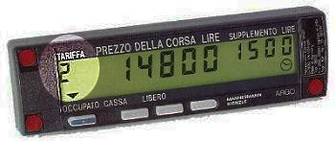
The radio taxis always show up on time with the help of their sophisticated gps unit. The car service I used costs barely more than a city taxi and is very professional. (transfercruiserome.com) If you see a taxi with its roof light lit, try hailing... as long as you are standing where they can pull over without blocking traffic (in other words, not on a narrow side street). There was one time I tried hailing a taxi on a crowded side street... one with barely any sidewalks (a common thing in Italy). The driver looked at me like I was crazy. Sure... he had no place to pull over. Lesson learned.
And just in case, always look at the meter for the "tarrifa 1" to be lit up. Within the city walls "tarrifa 1" is the correct lower rate. If you see "tarrifa 2" or "tarrifa 3" lit up for a trip inside the city limits of Rome, beware... you've got a crook trying to double or triple the rate. Tarrifa 2 and 3 are used for trips outside the walls, into the suburbs or to the airport.
In general, I've found the drivers to be talkative, friendly, helpful and responsive when you at least try to speak some Italian. I'm sure they are more used to tourists who don't attempt even the most basic Italian words and expressions. Looking back, I wish I had taken photos of the drivers... I still remember their faces and smiles. By the way, unlike in Manhattan, every taxi driver was actually an Italian.
--Jerry Finzi
You can also follow Grand Voyage Italy on:
Google+
StumbleUpon
Tumblr
Copyright 2015 - Jerry Finzi - All Rights Reserved
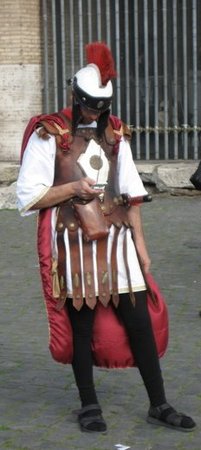
There is a pretty big learning curve when learning Italian texting abbreviations and you need a fairly decent working knowledge of the Italian language itself as a foundation.
Translation:
Ci sei? Non ti vedo più da tanto! La prossima volta rispondi per favore perché ti voglio bene e mi manchi! Grazie e baci.
Are you there? I haven't seen you for a long time! Next time, please answer my message because I love you and I miss you! Thanks and kisses.
Bouna fortuna! You'll need it!
--Jerry Finzi
If you enjoyed this post, please share it with your friends. Grazie!
Categories
All
1 Making Plans
2 Gear And Tips
3 Getting Around
4 Tuscany
5 Amalfi Coast
6 Basilicata
7 Puglia
8 Rome
9 Postcards
Fotos Di Finzi
History For Italians
Humor
La Cucina & Recipes
More Than Gelato Pizza
More-than-gelato-pizza
News Del Giiorno
Off The Tourist Path
Archive
June 2024
January 2021
January 2019
December 2018
November 2018
August 2018
April 2018
March 2018
February 2018
January 2018
December 2017
November 2017
October 2017
September 2017
August 2017
July 2017
June 2017
May 2017
April 2017
March 2017
February 2017
January 2017
December 2016
November 2016
October 2016
September 2016
August 2016
July 2016
June 2016
May 2016
April 2016
March 2016
February 2016
January 2016
December 2015
November 2015
October 2015
September 2015
August 2015
July 2015
June 2015
May 2015
April 2015
March 2015
February 2015
January 2015
December 2014
November 2014
October 2014
September 2014
August 2014
July 2014


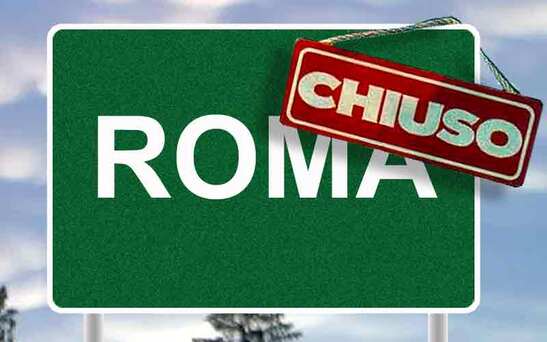
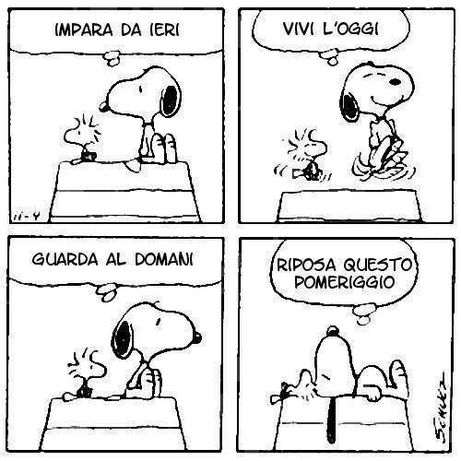
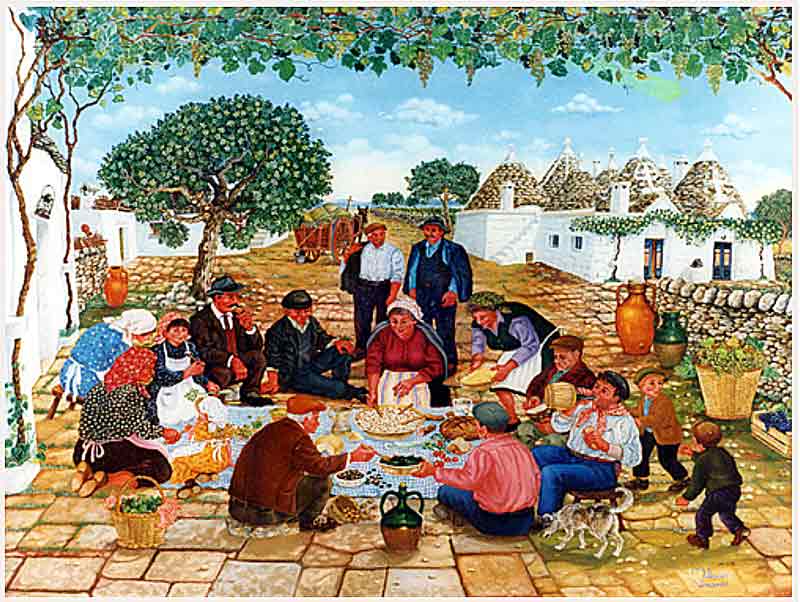
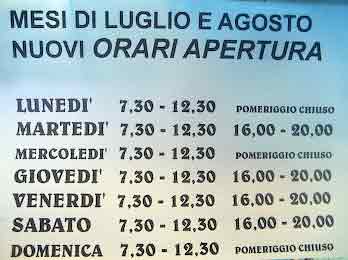
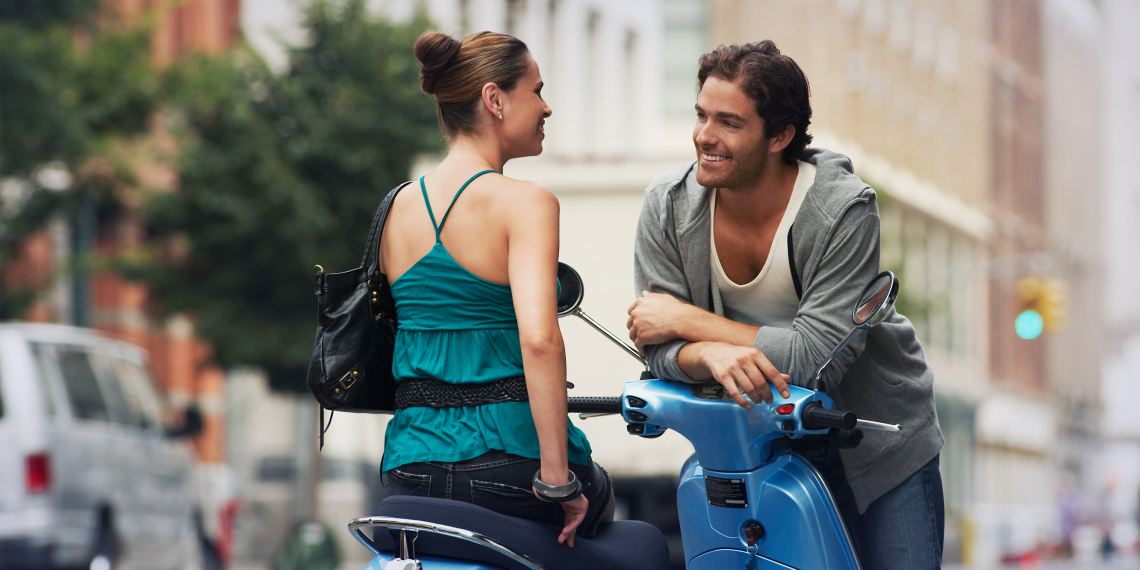
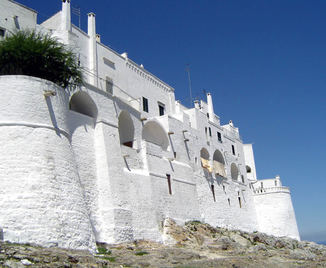
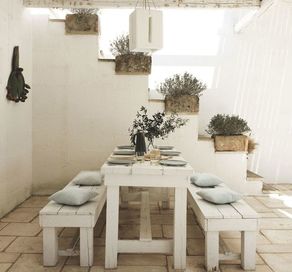

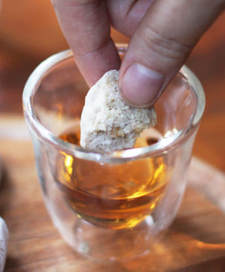
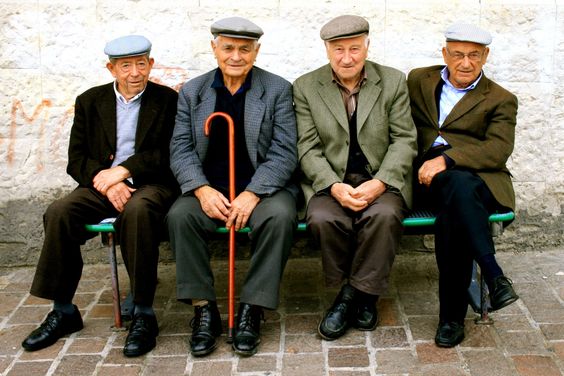

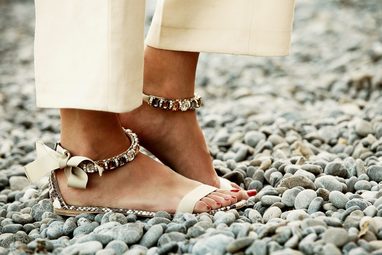
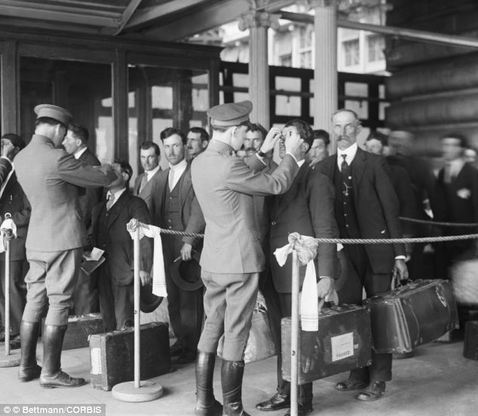
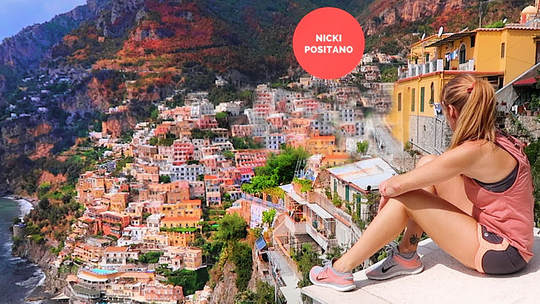
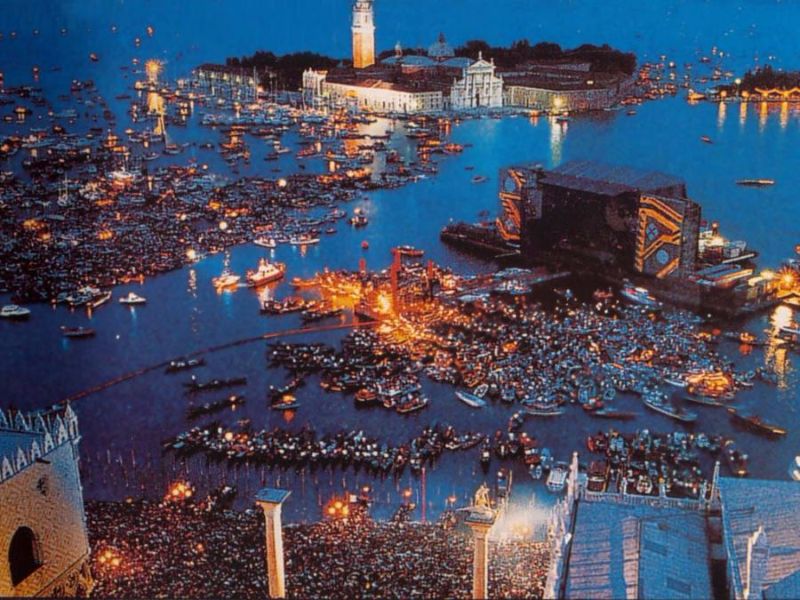
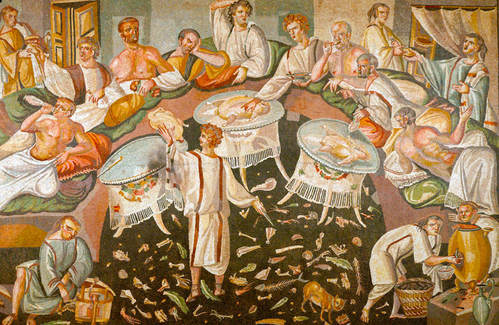

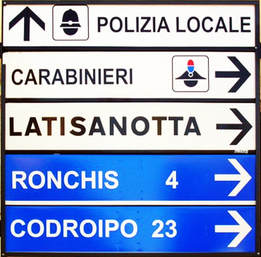
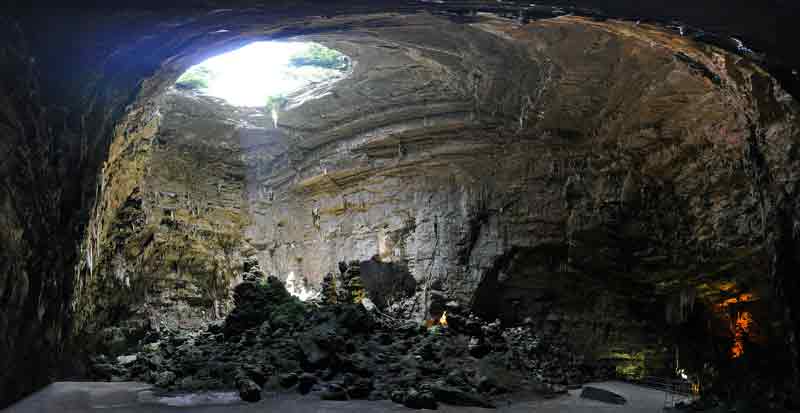
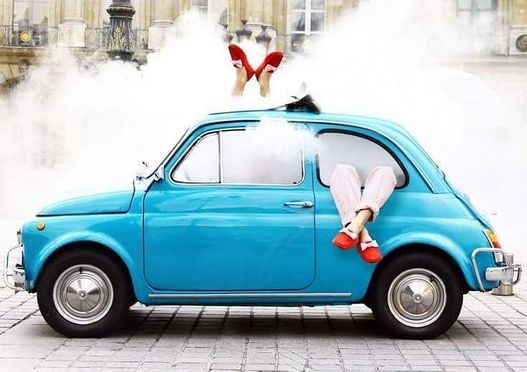


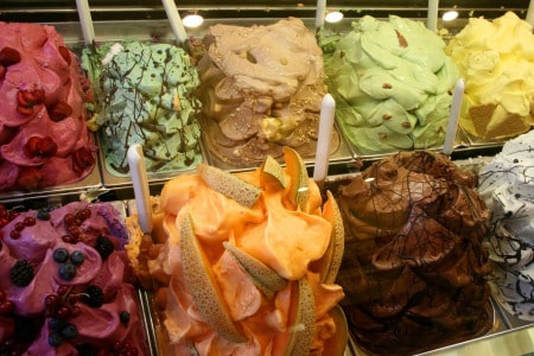
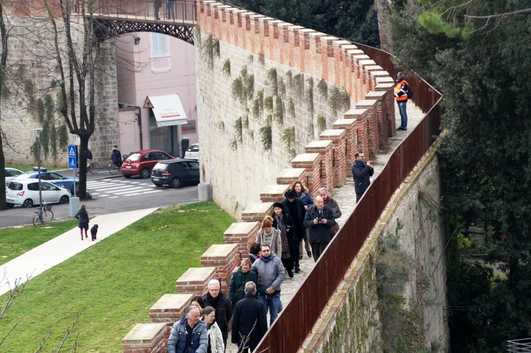
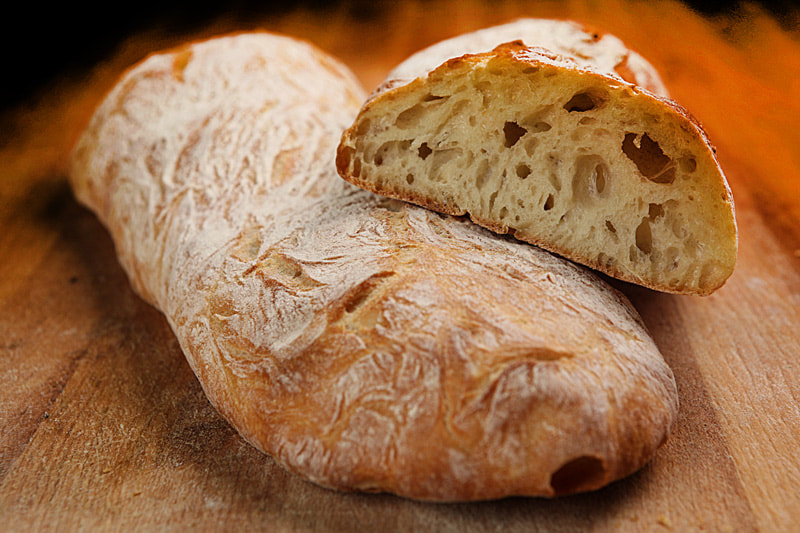



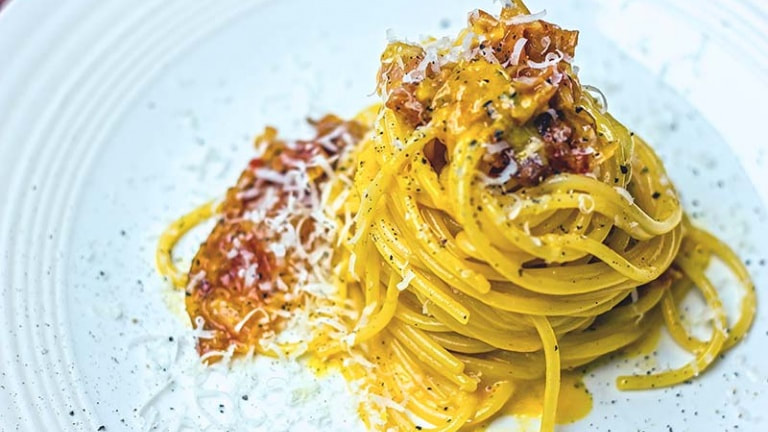
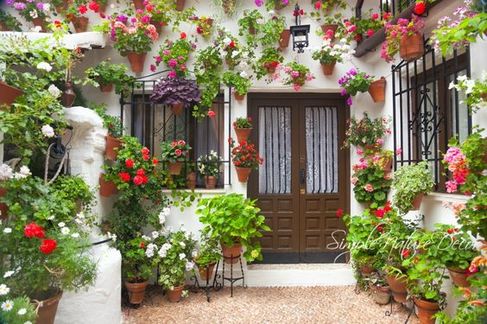
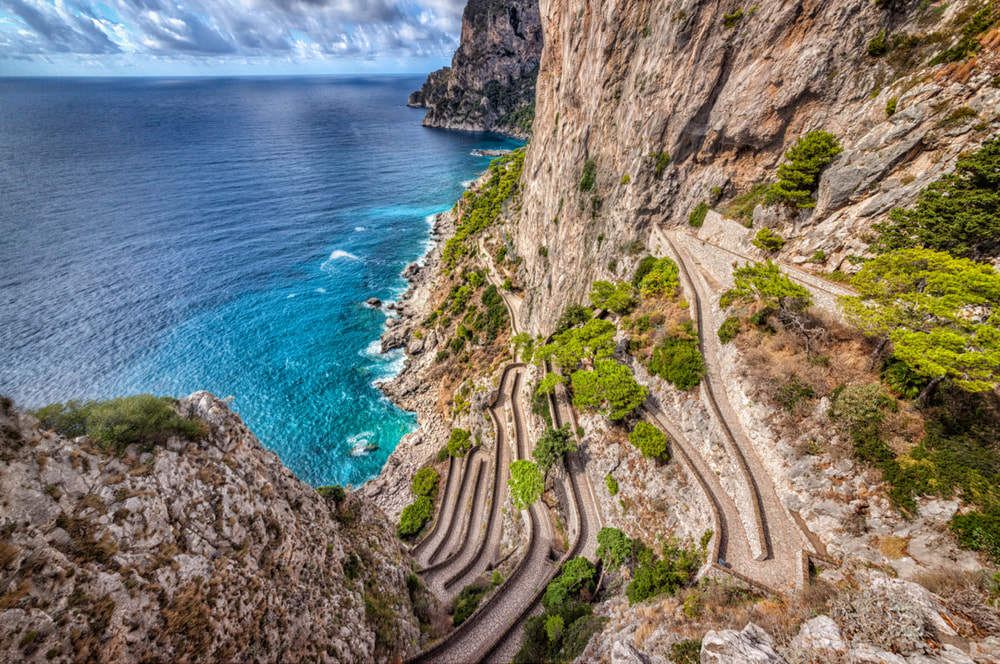


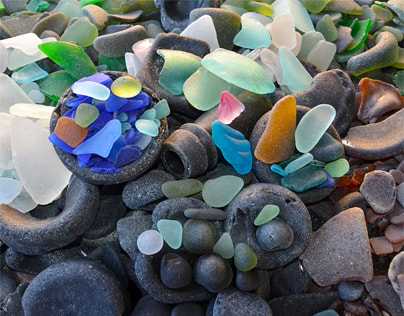
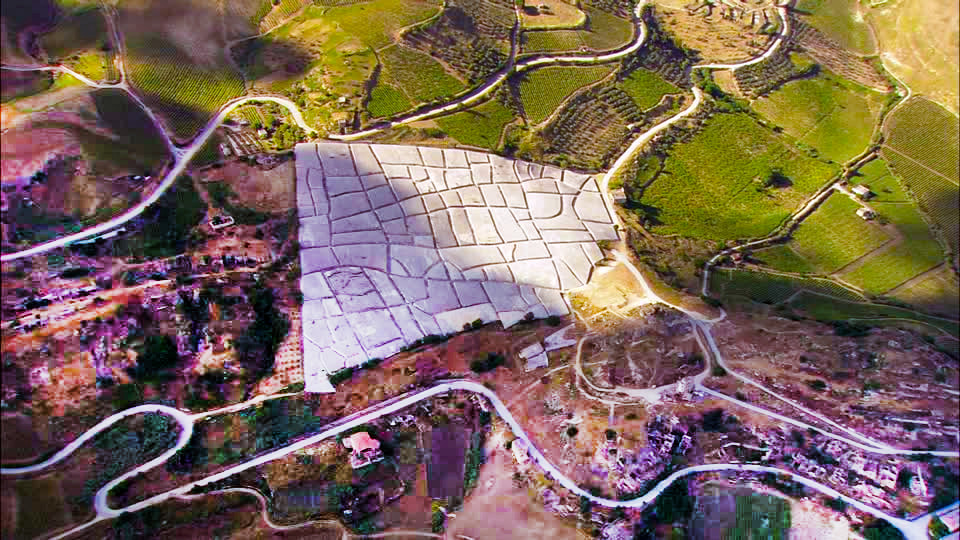
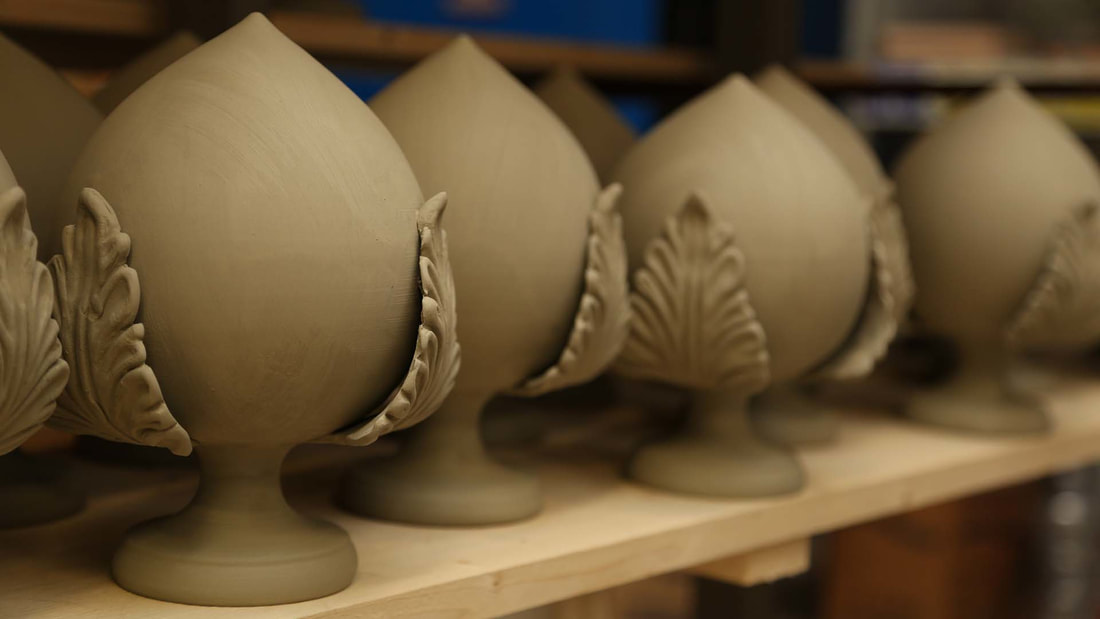
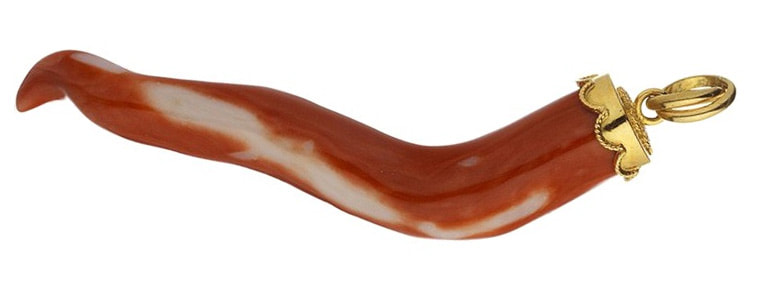
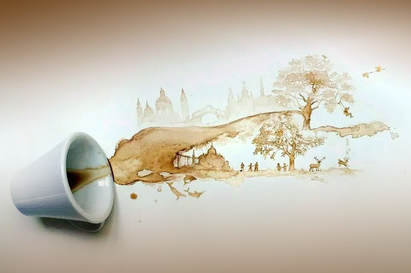
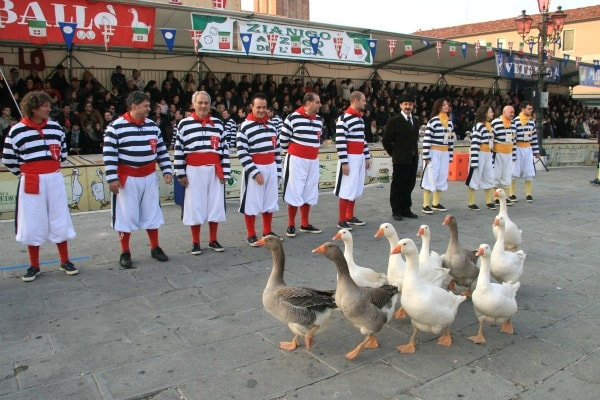

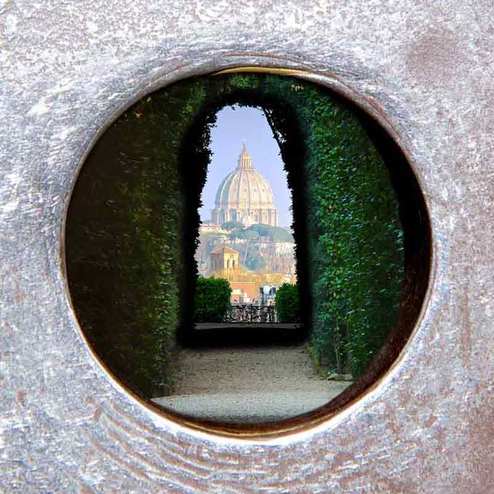
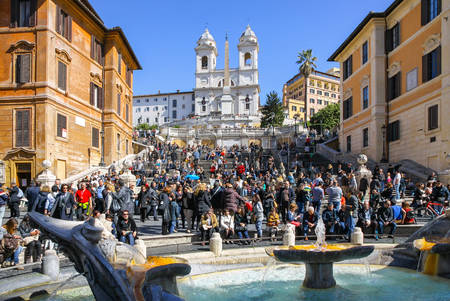
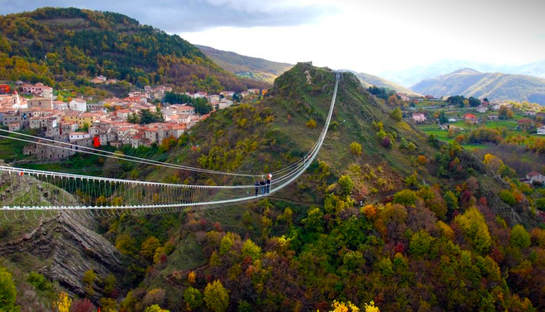
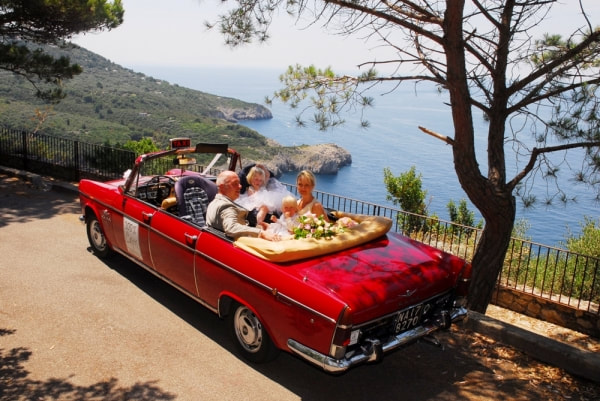
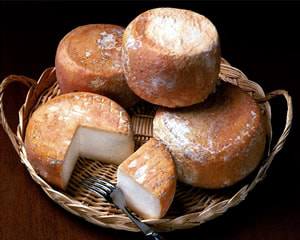
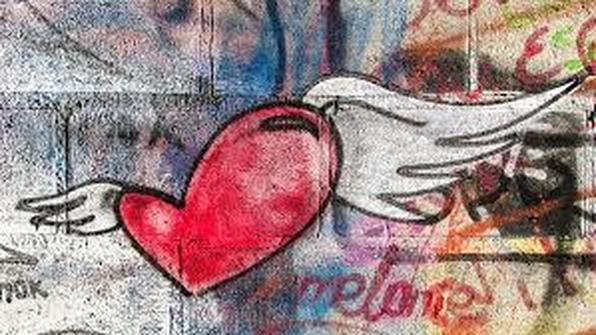
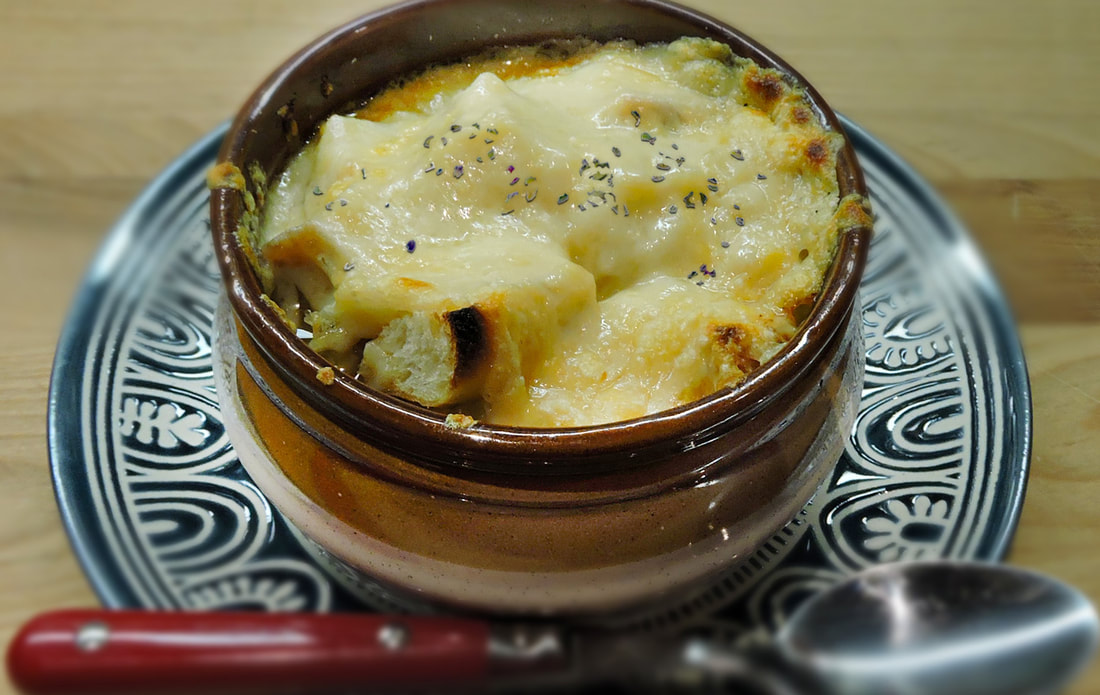

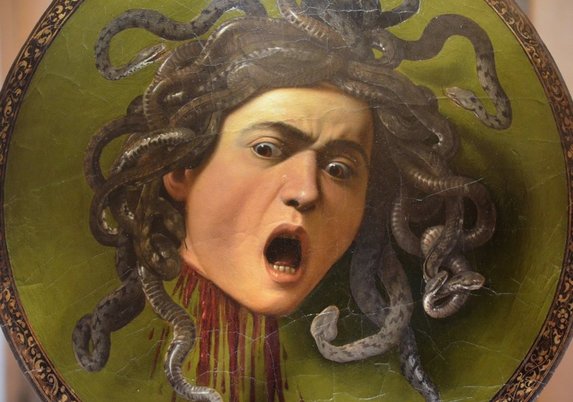
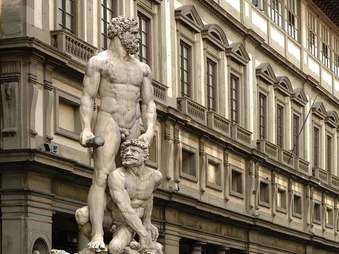
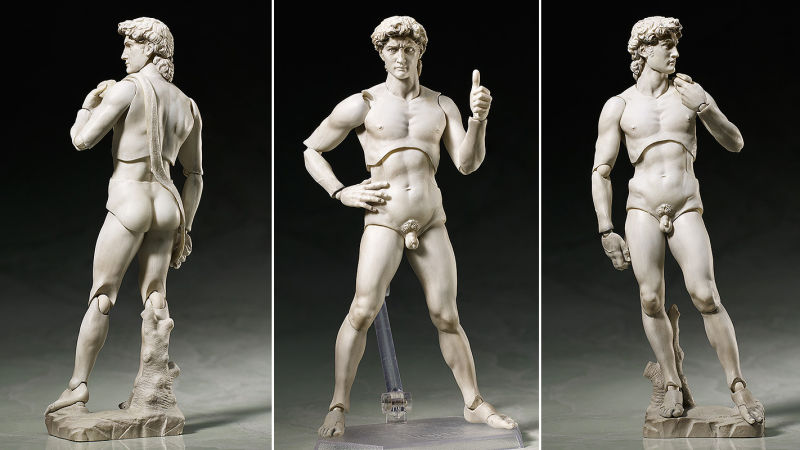
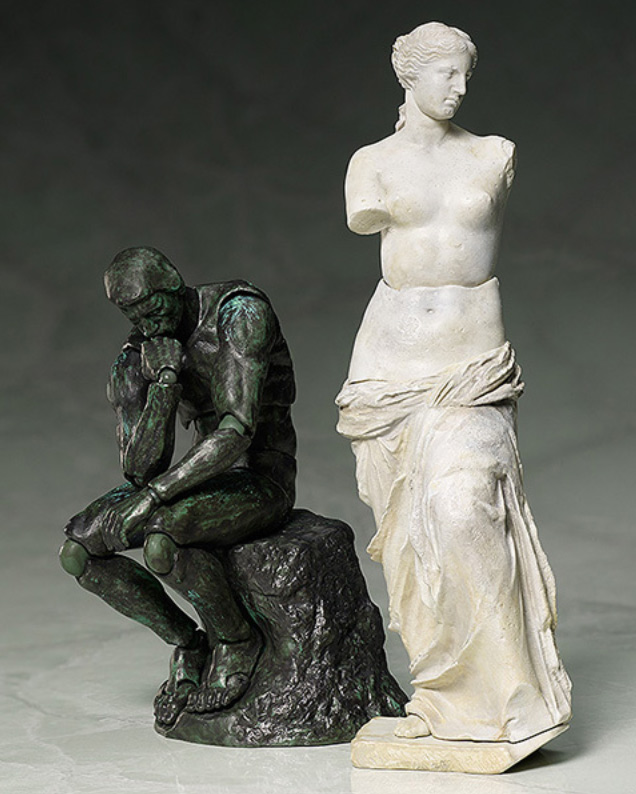
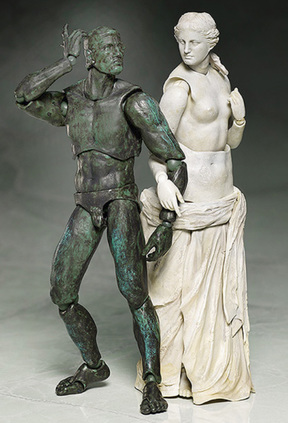
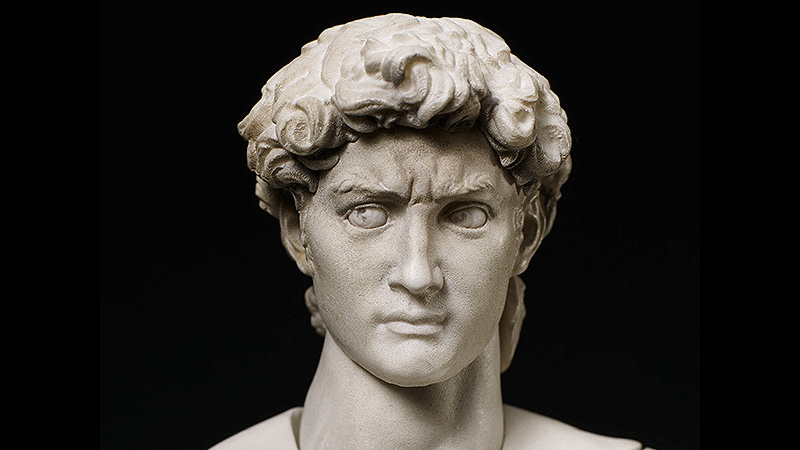
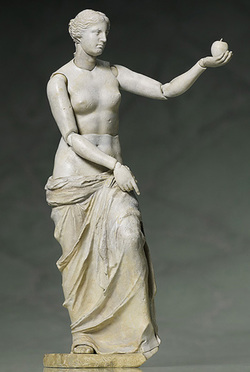
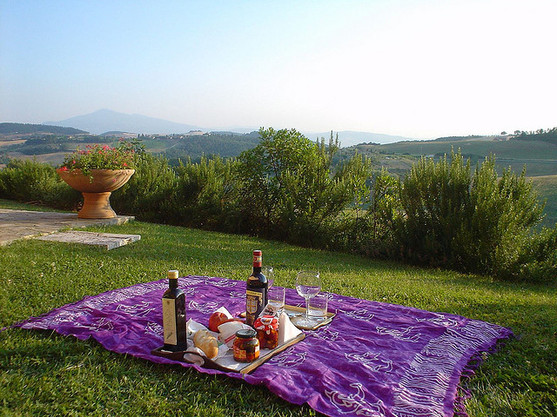


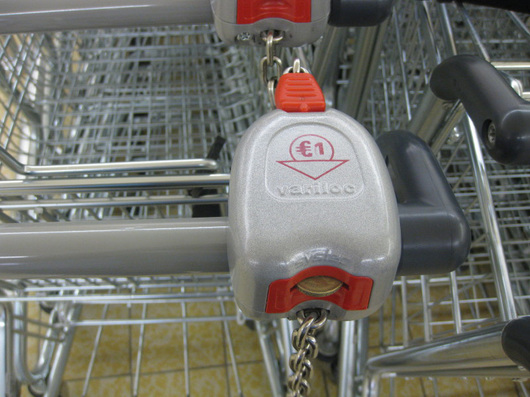

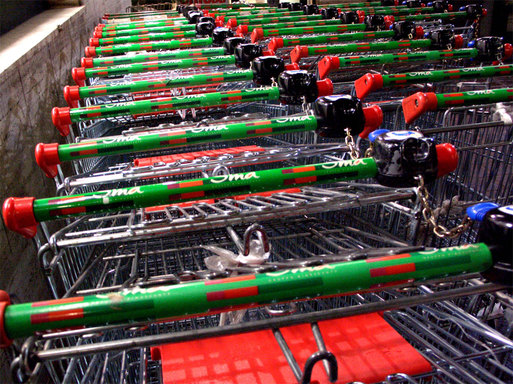
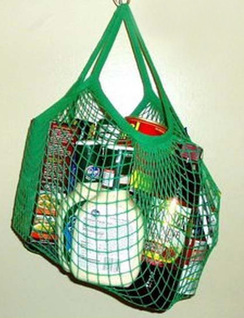
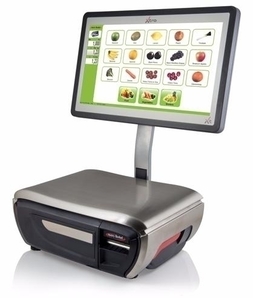
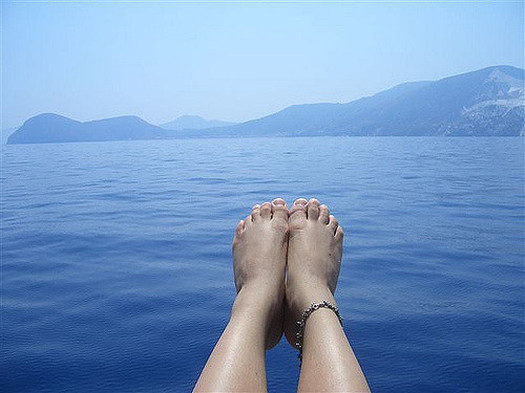
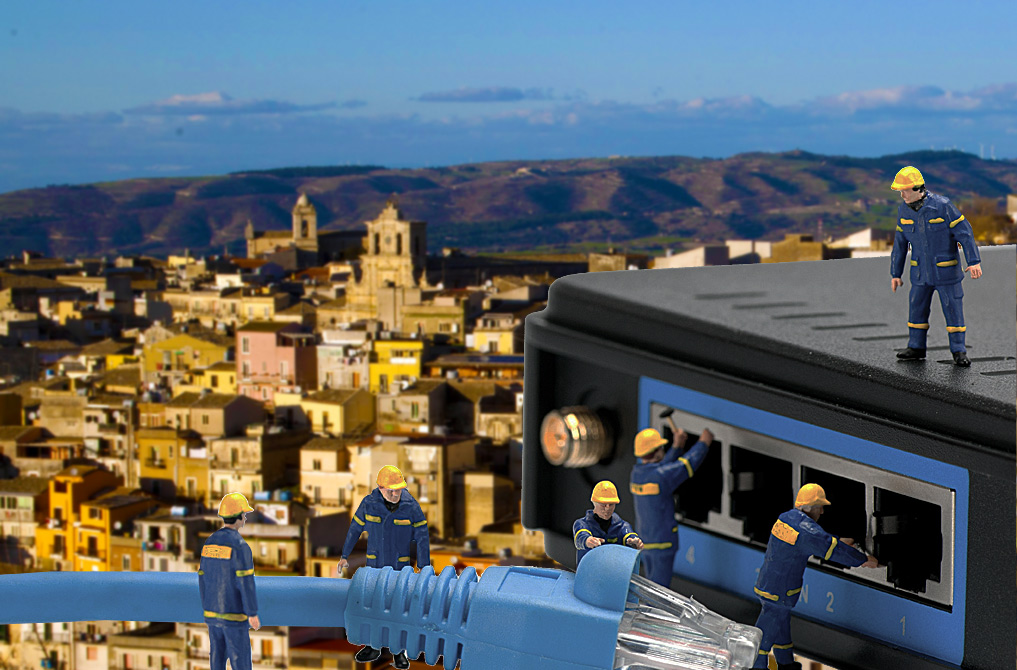
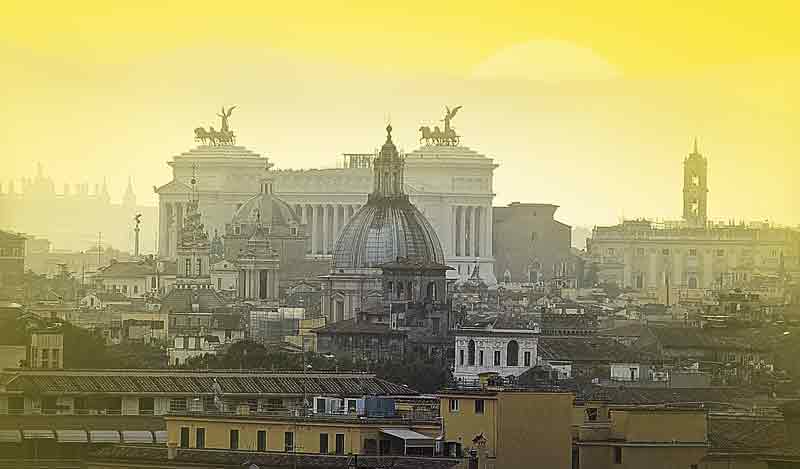
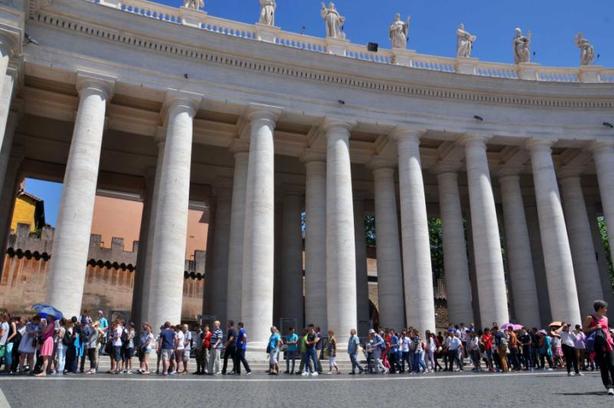
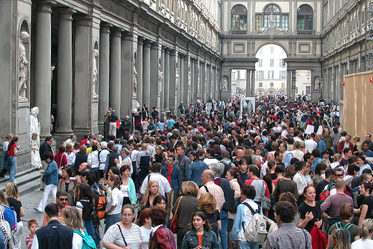
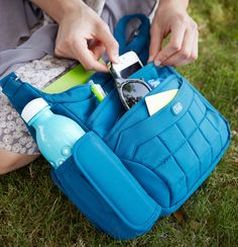


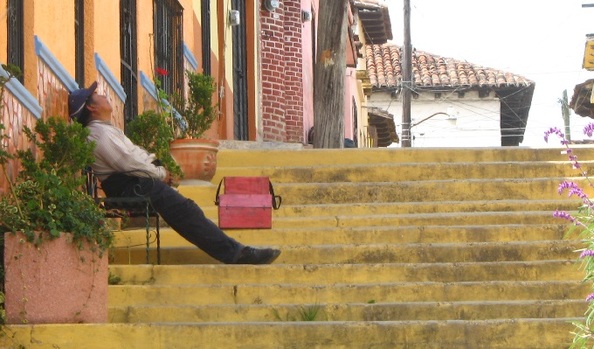
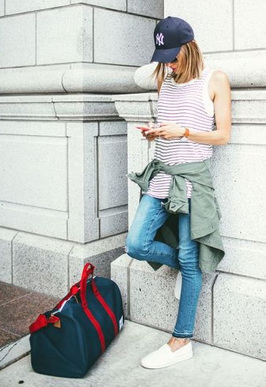

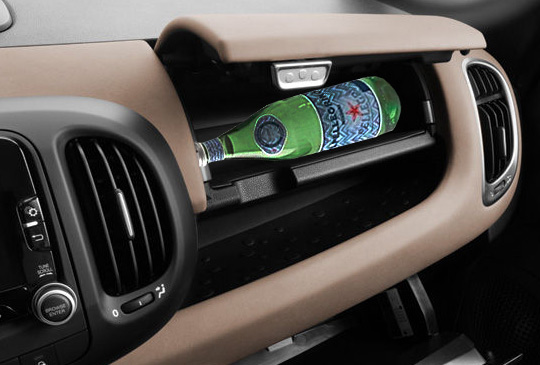
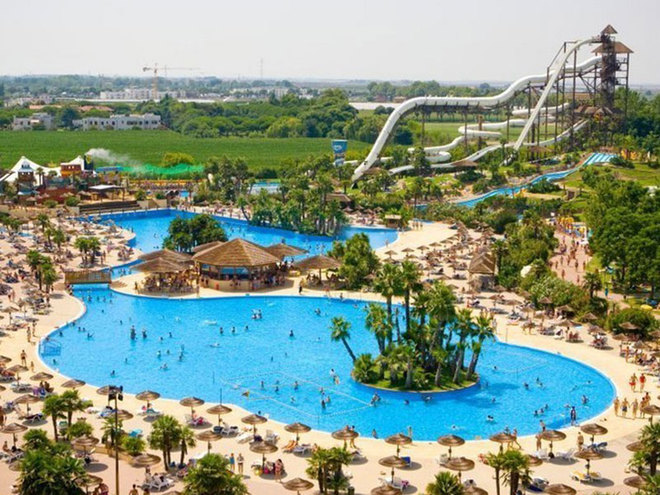

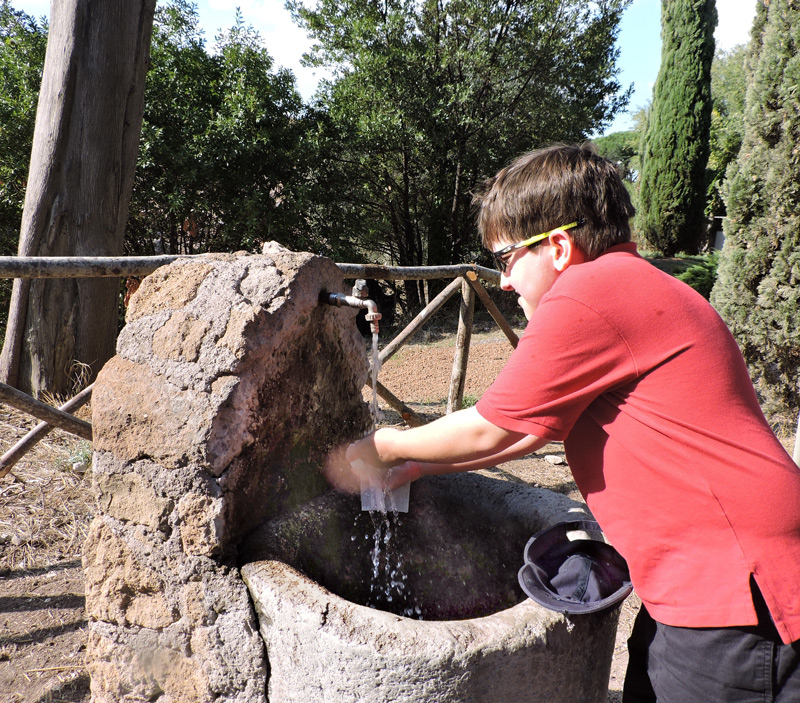
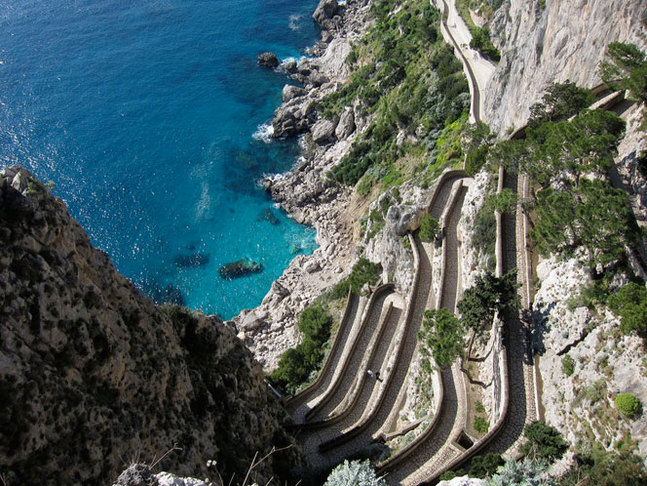
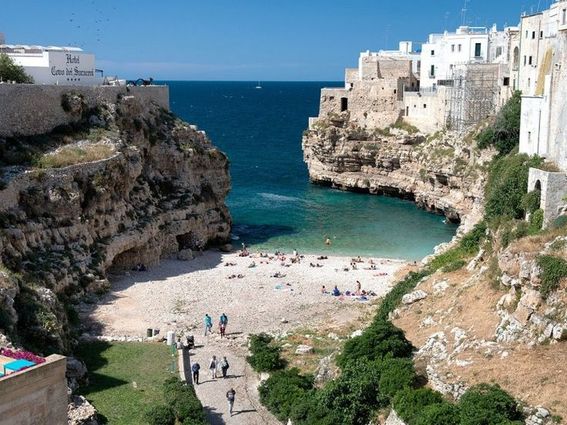
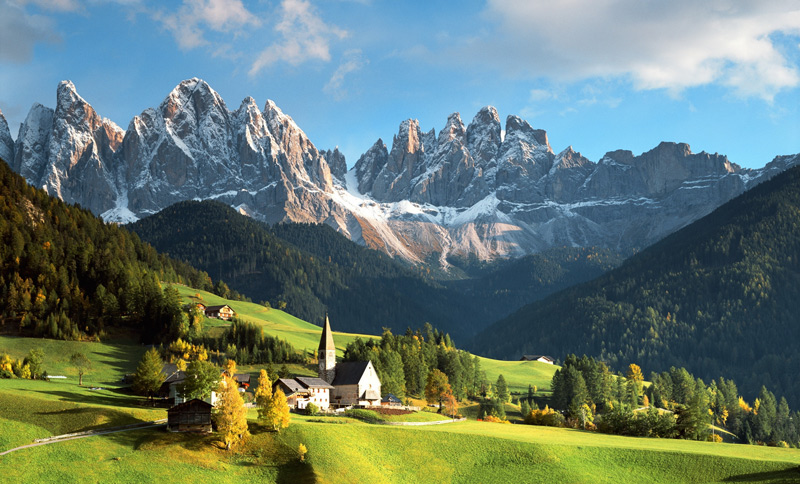

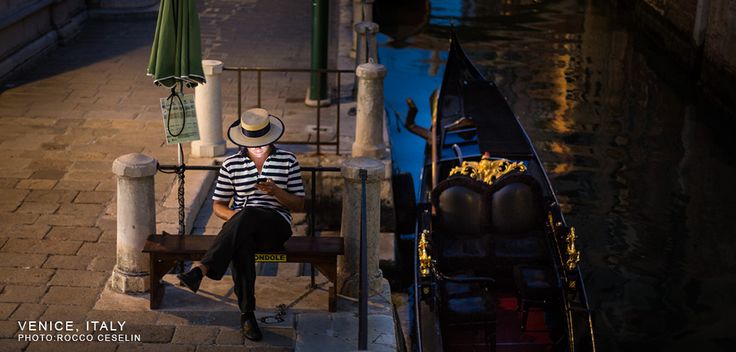
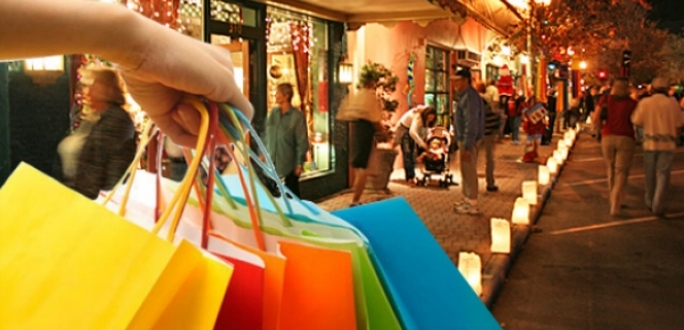
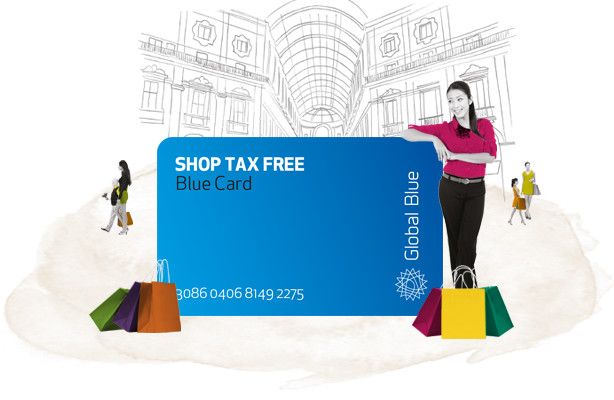
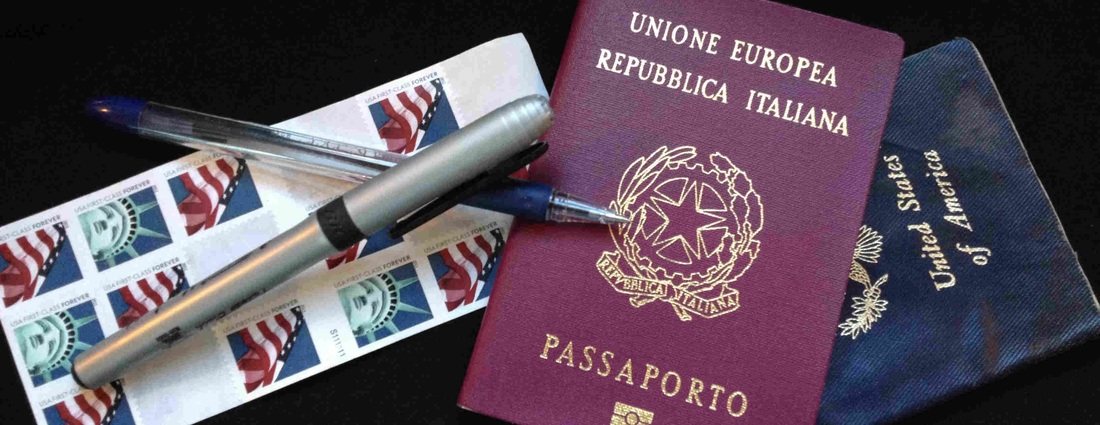
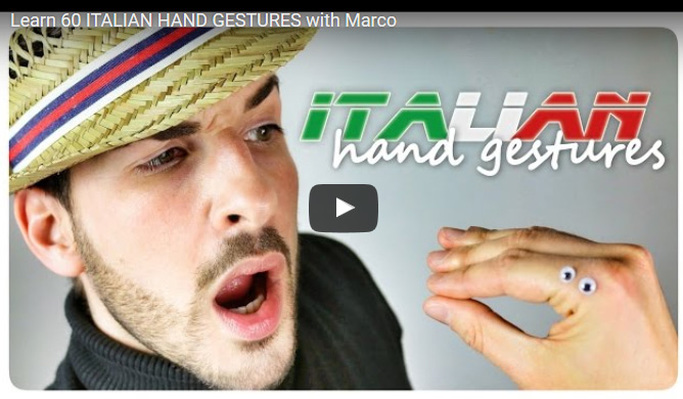
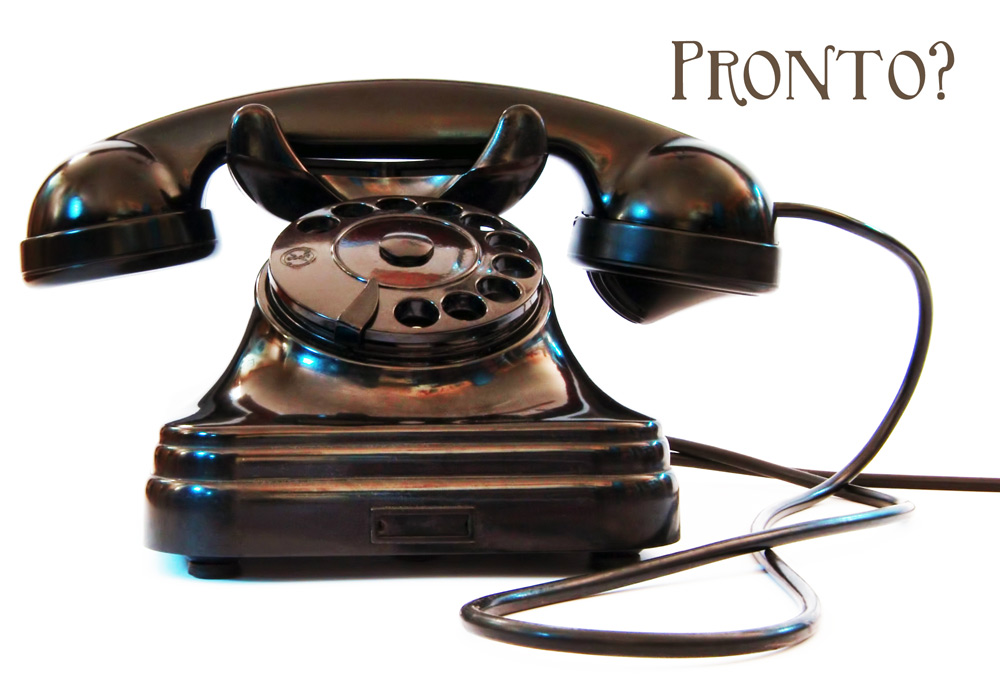
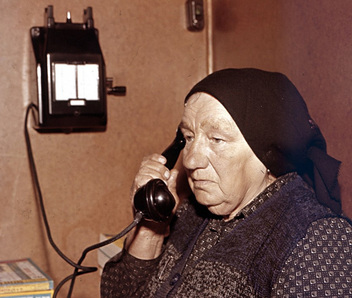

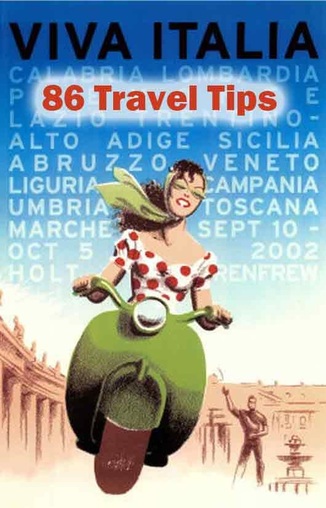


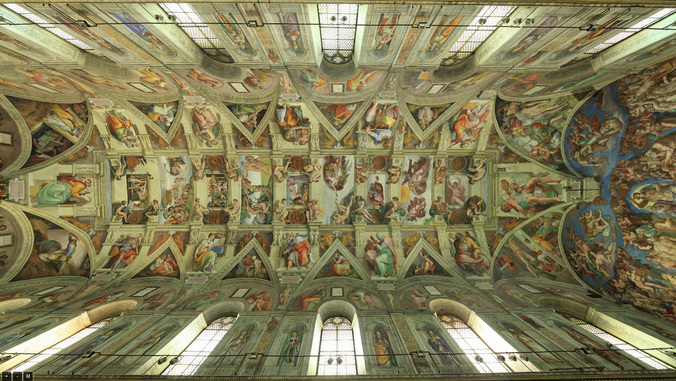
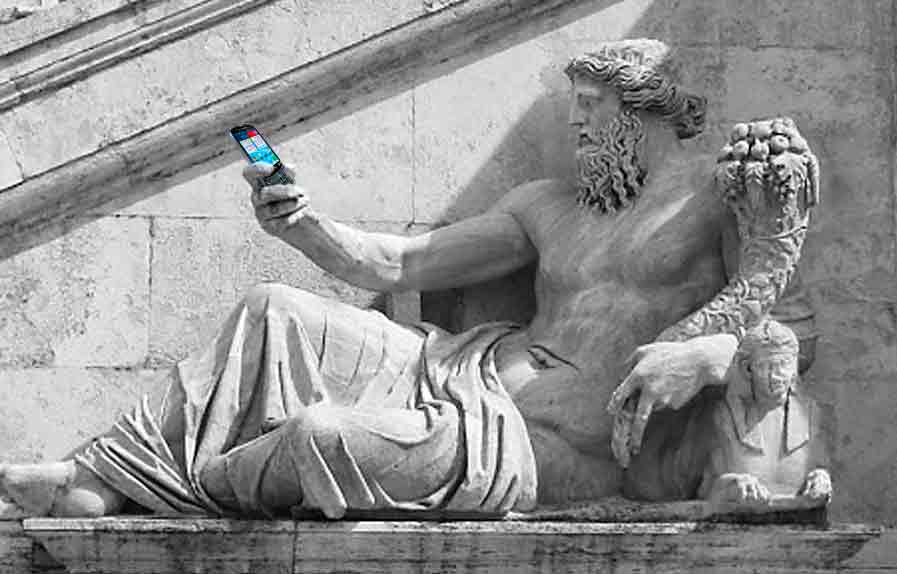
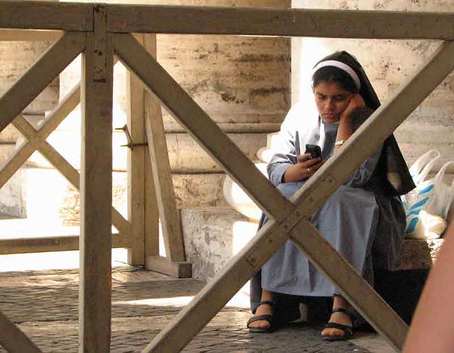
 RSS Feed
RSS Feed
